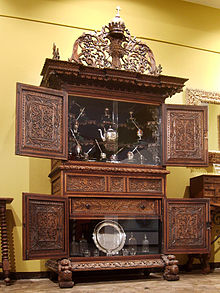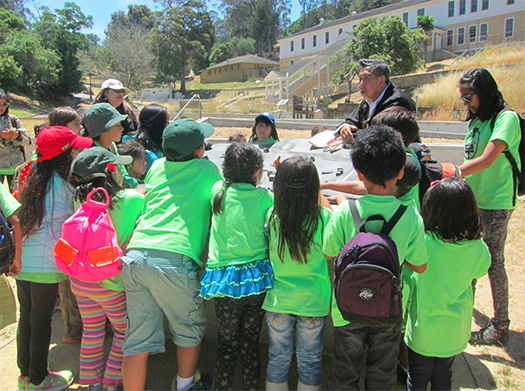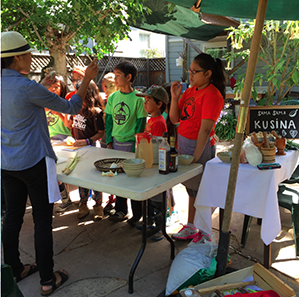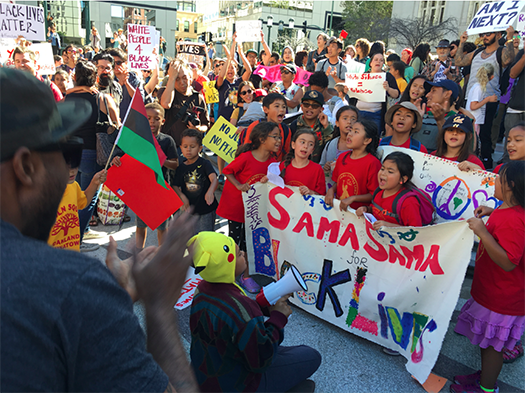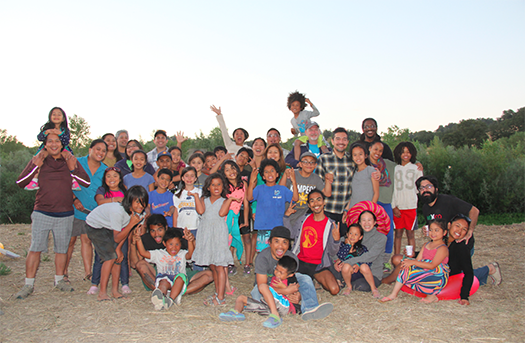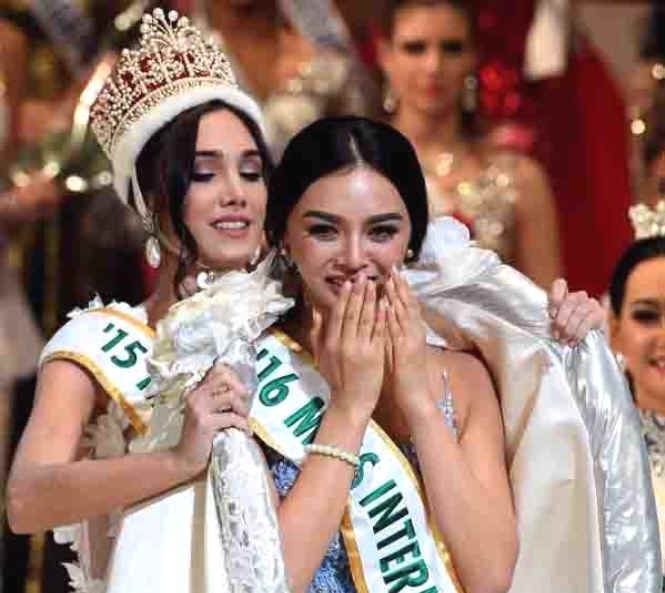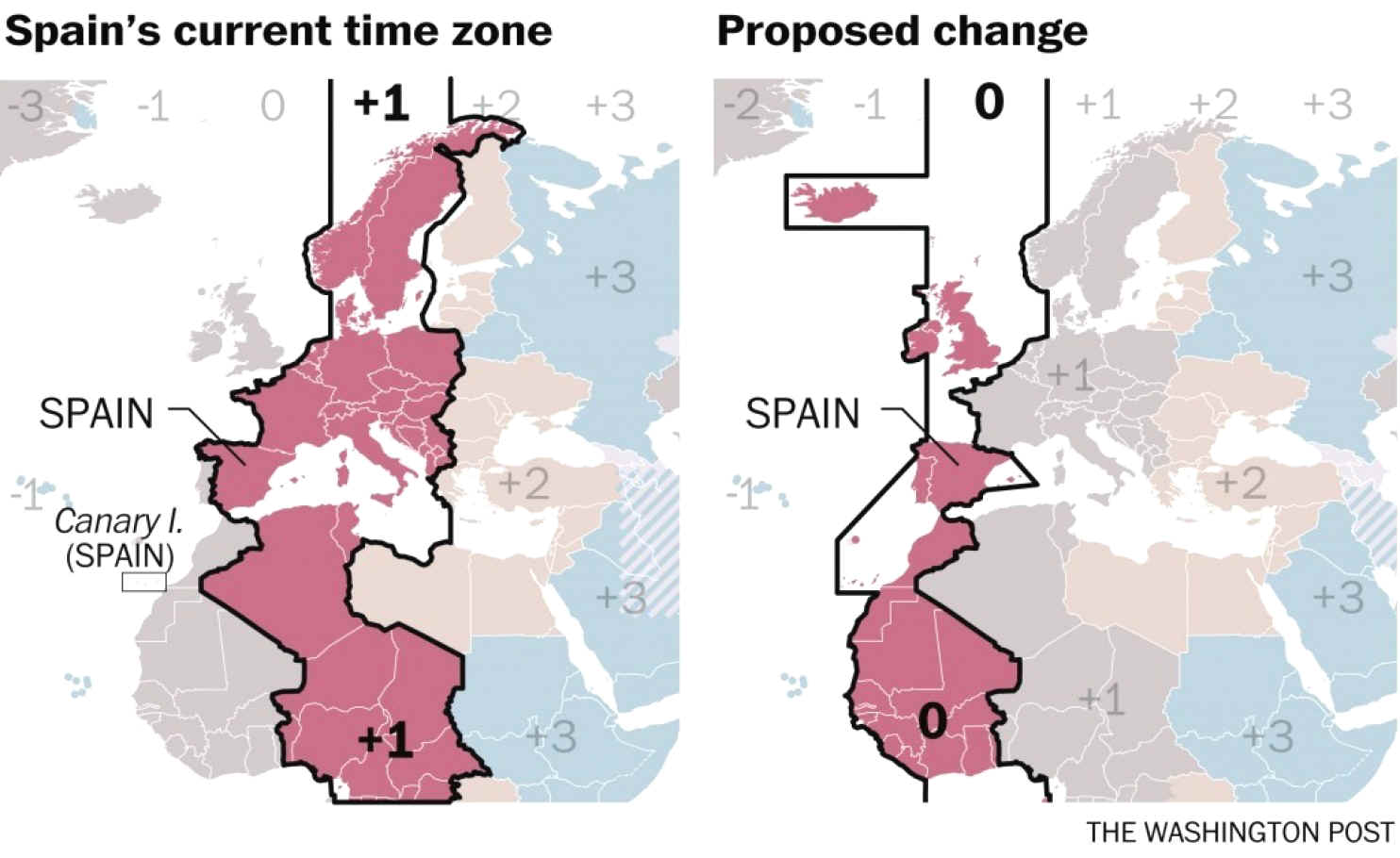|
_______________
A
few days ago on the evening news there was a report about demonstrators
taking to the streets to demand immigration reform.
Many in the crowd were carrying the Mexican flag.
Others were burning the U.S. flag.
One or more of the demonstrators was carrying a poster that
contained the message that "WE ARE ALL IMMIGRANTS."
I suspect what this demonstrator meant was "We are all
immigrants or are descended from immigrants".
Nevertheless, that statement is still incorrect.
This
placard begged the question about whom among us are immigrants?
I had never viewed any of my know ancestors as
"immigrants", so today I consulted my dictionaries about
immigrants and how they and their descendants differ from the early
colonists and their offspring. Here
are the definitions I found:
"Immigrant"
- "1. A person who
migrates to another country, usually for permanent residence".
Those settling in Jamestowne in 1607 and in Plymouth in 1620 were
traveling to land owned, or at least claimed, by Great Britain, so they
were not migrating to "another country".
Those who traveled from Spain or the Canary Islands to New Spain
were not immigrants. They
too were colonists.
"Immigrate"
- "1. To come to a
country of which one is not a native, usually for permanent residence.
The above English and Spanish colonists were technically natives
of these new Spanish and English colonies.
"Immigration"
- "The coming into a country of foreigners for purposes of
permanent residence".
The English and Spanish colonies were not traveling to a
"country of foreigners", but rather were moving to a colony
established by their respective countrymen.
"Colonist"
- "1. An inhabitant of
a colony. . . 3. An
inhabitant of the 13 British colonies that became the United States of
America".
I would add to that definition, the inhabitants of that part of
New Spain within the current borders of California, Arizona, New Mexico,
Utah, Colorado, Texas and Louisiana, before 1790.
"Colony"
- "A dependent political community, consisting of a number of
citizens of the same country, who have emigrated therefrom to people
another, and remain subject to the mother country.
A settlement in a foreign country possessed and cultivated either
wholly or partially, by immigrants and their descendants, who have a
political connection with and subordination to the mother country,
whence they immigrated".
Clearly those who founded the British and Spanish colonies were
from the same country, and remained as a part of the mother country.
"Founder"
- "A person who founds or establishes".
"Patriot"
- "A person who loves, supports, and defends his or her country and
its interests with devotion".
"Patriots
Day"
- " The anniversary of the battles of Lexington and Concord
(1775)....
"The Founding
Fathers of the United States of America"
- "They
were
political leaders and statesmen who participated in the American
Revolution by
signing the United
States Declaration of Independence,
taking part in the American
Revolutionary War,
and establishing the United
States Constitution.
Within the large group known as the "Founding Fathers", there
are two key subsets: the Signers of the Declaration of Independence (who
signed the United States Declaration of Independence in 1776) and the
Framers of the Constitution (who were delegates to the Constitutional
Convention and
took part in framing or drafting the proposed Constitution of the United
States in 1789). A further subset is the group that signed the Articles
of Confederation.
Spanish soldiers like General Bernardo de Galvez, and Spanish militiamen
who fought and defeated the British in battles in North America and
elsewhere would also be considered "Founding Fathers of the United
States of America." Many
of them are listed as patriot ancestors of many current members of both
the Sons of the American Revolution and the Daughters of the American
Revolution.
"Some
historians define the "Founding Fathers" to mean a larger
group, including not only the Signers of the Declaration of Independence
and the Framers of the U.S. Constitution but also all those who, whether
as politicians, jurists, statesmen, soldiers, diplomats, or ordinary
citizens, took part in winning American independence and creating the
United States of America".
From
the above definitions I conclude that any of our ancestors who were
native Americans can be eliminated from the term "immigrants,"
even though
his ancestor may have migrated from the Orient thousands of years ago.
Large
numbers of Spanish colonists, soldiers and priests began arriving in New
Spain during the 16th Century, which is now California, Arizona, New
Mexico, Utah, Colorado, Louisiana, Florida, Texas and Mexico before the
British colonial period. Spanish
"colonists" continued to arrive throughout the British
colonial period and during the American Revolutionary War.
Many Spanish soldiers and militiamen fought the British in North
America and around the world. They
were just as responsible for American independence as the Minuteman in
Virginia or New England.
Spain
originally laid claim to all the land west of the Mississippi River,
"north to the arctic snows".
That land was officially granted to Spain by the Treaty ending
the French and Indian Wars in 1763.
Many Spanish settled in New Orleans, which was at that time part
of Spanish Florida. The
British with force, removed many French settlers from Arcadia to the
coastal region of Louisiana. Those
people's descendants are today referred to as "Cajuns".
These
Spaniards and Arcadians from New Spain and Spanish Florida fought
against the marauding Indians and the French during the American
Colonial period and also fought against the British during the American
Revolutionary War, along with Spanish soldiers and sailors stationed in
Cuba, Mexico, Canary Islands, Mexico and Puerto Rico.
The Spanish Militia included Spanish, Canary Islanders, Native
Americans, Germans, Negros, Creoles and Cajuns.
Their descendants are certainly patriots and not immigrants. It
was they who established the Spanish colonial government; cleared the
land; ordained the churches;
offered religious guidance to the new settlers; and created industry and
commerce. By definition,
these colonists and their current day descendants were not
"immigrants".
Most
of the Spanish and French residents of the territory purchased from
France in 1803 under the "Louisiana Purchase" became citizens,
and should not be considered as immigrants since they had established
residence in what is now the United States well before 1790.
In 1846, when the Empire of Texas signed a treaty with the United
States to become a state, all the residents - most of whom were Hispanic
- became citizens, and are considered founders of Texas.
It is interesting to look at the list of those who died at the
Alamo. About 2/3 of the
Alamo defenders had Hispanic names.
All
of those who traveled from Great Britain between 1607-1789 were also
"colonists". It
was both the Spanish and English colonists who carved out of the land
civilized colonies where people could live, work, worship and
congregate. Each group
became the first "citizen soldiers" fighting the marauding
Indians and the other nations who sought to displace them.
The Spanish established a Spanish colonial government in the
south and southwest and the British established British colonial
governments in the east. Both
cleared the land; ordained
the churches; offered religious guidance to the new settlers; and
created industry and commerce. By
definition, these colonists throughout the continent were not
"immigrants", and we should not refer to their current day
descendants as "immigrants".
During
the colonial period of the United States groups from other countries
also settled here. Huguenots
from France and Holland settled in Niue Amsterdam (current New York),
claiming religious freedom. Some
Swedes settled in Delaware. Germans
settled in large numbers in Pennsylvania.
English, Irish, Scottish and Welch citizens continued to arrive,
colonizing their areas.
Following
the termination of the French and Indian War in 1762, dissatisfaction
began to fester with the British Crown and with Parliament, while
colonial leaders began to work toward a more independent self
governance. Committees of
Safety sprang up throughout the colonies.
In Boston the Tea Party exemplified their outrage with taxes
assessed by the Parliament.
Ben
Franklin's attempts to establish a colonial militia were immediately
quashed. The British
attacked founders at Lexington and Concord, followed by the Battle of
Bunker Hill. Petitions
submitted to the Crown fell on deaf ears.
Founders of the United States of America certainly include those
who demanded independence; who supported the Declaration of Independence
in 1776; and those who defied the British.
Those who during the period from 1763 to 1783, were activists
before the Declaration of Independence was signed; those who
participated in the defeat of the British at Yorktown; and those who
continued to fight the British Indian allies until the peace treaty was
signed in September 1783; and those who participated in the preparation
of the U.S. Constitution and Bill of Rights in 1789, should be referred
to as "founders", and their descendants are not
"immigrants".
Many
of our American Indian, British, Spanish, German, French, Dutch, and
Swedish ancestors fought in the American Revolutionary War; signed an
Oath of Allegiance; provided
labor and/or materials to the war effort; or supported the revolution by
serving as a state or local officer.
Those who remained loyal to the cause from 1776 to the signing of
the US Constitution and Bill of Rights on September
25, 1789 were clearly "Patriots of the United States" and
should not be referred to as "immigrants".
I would extend that date to April 30, 1790, when George
Washington was inaugurated as our first President. Just over a month
earlier, the original United
States Naturalization Law of March 26, 1790
provided the first rules to be followed by the United
States in
the granting of national citizenship.
This law limited naturalization to
immigrants who were "free white persons" of "good
character. It also provided
for citizenship for the children of U.S. citizens born abroad, but
specified that the right of citizenship did "not descend to persons
whose fathers have never been resident in the United States". It
specified that such children "shall be considered as natural
born citizens."
Many
of our Negro brothers and sisters descend from either freemen or slaves
who were colonists, founders and patriots.
Their ancestors worked to build this country from colonial days
through the American Revolution. The
Sons of the American Revolution has discovered the identities of over
20,000 Negro patriots during the American Revolution.
That number would be much larger had better records been kept
during colonial times. Those
who were imported as slaves in the early to mid 1800s, would properly be
counted among the immigrants.
Some
historians might argue that the War of 1812 was merely a continuation of
the American Revolutionary War, and that those who fought in that war
from 1812-1815 should also be called Patriots.
Interestingly, about 25% of all men between 16-45 during that war
served as soldiers during the war.
Historians
tell us that during the American Revolutionary War, about 1/3 were
patriots; 1/3 were Loyalists, and 1/3 were uncommitted.
At the end of the war, many loyalists either returned to England
or moved to Canada. Most of
the remaining loyalists and undecided signed an oath of allegiance.
They and their descendants conducted their lives as loyal
citizens of the United States. Periodically
since that date, the United States, by law and international treaty has
adopted measures to control immigration and naturalization of aliens.
We now have limitations on the total number of immigrants that
our country can effectively assimilate each year, and quotas from many
countries.
I
would estimate that 60%-75% of the Anglo Saxon and Spanish populations
of the United States can trace their ancestry back to the colonists,
founders or patriots, and should not be referred to as
"immigrants."
Naturally,
there have been immigrants from England, Ireland, Scotland, and Wales as
well as France, Spain, Germany, The Netherlands and Sweden who arrived
in the United States after the American Revolutionary War.
Although there were a few French who fought on our behalf, who
remained here after the war, many migrated from Quebec or France later.
Although many Germans moved to Pennsylvania before 1776 and
fought with the colonists, a large number of Germans coming to the US,
came to settle in Texas in the mid 1800s.
These late comers, may correctly be referred to as
"immigrants". Any
ancestor arriving at Ellis Island would be considered as an
"immigrant".
From
the above, clearly those of our ancestors who were here before 1790, and
many would argue before 1815 were not considered as immigrants.
So, does the mantra "We are all immigrants" apply to
all of our ancestors who arrived after 1790, or 1815?
To one extent that statement is true.
How do we differentiate among that large group of arrivals?
Those
from Great Britain and Spain were easily assimilated.
Many already had family here.
Those immigrating from other countries had to abide by the then
existing laws on immigration and naturalization.
Many of these newcomers were patriotic and large numbers fought
in the War of 1812, Spanish-American War, War with Mexico, Civil War,
World Wars I and II, Korea, Vietnam, Grenada, Panama Canal, Bosnia, Iraq
and Afghanistan. Other
newcomers were patriotic citizens who contributed by serving as elected
officials, statesmen, jurists, professionals, authors, artists,
educators and religious leaders. The
great majority of these immigrants paid their taxes, served on juries,
and acted as responsible citizens.
So,
what groups in the United States are descended from Immigrants?
By definition, "colonists" are not immigrants, nor are
their descendants. Clearly,
those of us who have ancestors who were "founders" are not
immigrants; and those who descend from the "patriots" of our
nation are not immigrants. The
residents of the large area purchased from France in the Louisiana
Purchase, and those who became citizens in Texas in 1846 should not be
considered immigrants, because Texas was admitted to the union by
treaty.
A
large number of immigrants came here in a legal fashion.
We now have laws controlling immigration into the United States.
To immigrate, one must apply and obtain permission.
A legal immigrant must show that he is capable of supporting
himself or herself and that their family intended to remain in the
United States. They paid
their taxes to provide for public education, health, defense, and the
construction and maintenance of our roads.
They purchased hospitalization insurance to cover their families.
Illegal
immigrants have jumped the line. Many
of those from Latin America and the Orient have no intention of
remaining here. In towns all
along the Texas border there are boarding houses for expectant mothers
from Latin America, who spend the last month of their pregnancy in the
U.S. so their child will be born here.
Their purpose is to have pregnant Hispanic mothers deliver their
child in the US so that the child can become an American Citizen, and
entitle them to Aid to Dependent Children, the WIC program, food stamps,
Medicaid and other social programs for US citizens.If
we don't already have laws to prevent this flagrant abuse, Congress
needs to act immediately. The
Border authorities should be manned with enough personnel to close these
facilities down.
Among
the immigrants from Christian and Jewish Europe and Latin America and
those from the Orient, other than Muslims, there has been widespread
assimilation. They have
enlisted and fought in World Wars I and II, Korea, Vietnam, and the more
recently in the war against terrorism.
They have learned to speak English and have accepted our laws and
customs, and have become a part of our community.
Many of those migrating from Muslim areas have refused to become
assimilated. They continue
to speak their native tongues; wear their traditional dress; and live in
enclaves. Many even demand
that the United States adopt Sharia Law.
In parts of London, the police have abdicated their right to
enforce the law - and allow the Mullahs to practice Sharia Law.
Recently, we have seen where families have murdered their own
daughters as "honor killings."
Once
an illegal alien's child becomes a citizen, the mother then qualifies
for a green card, and after a year, the remainder of the family can
legally migrate with green cards of their own.
Many come here to work, so they can send money back to Latin
America or the Orient to support their families.
Many in this latter group pay no income taxes, and in fact those
with low incomes get a sizeable rebate check from the government because
of our tax laws.
Crime
rates among illegal aliens is greater than among citizens.
Many are involved in the Mexican Cartels and Chinese Tongs that
operate in the U.S. Our
jails along the Mexican Border are filled with illegal aliens who have
committed major crimes. Government
figures for years have revealed that it costs about $40,000 to $50,000
per year to incarcerate a prisoner.
Those
coming across our borders illegally are incorrect in stating that
"We are all immigrants". Most
of us descend from those brave souls who carved a nitch from the
wilderness and created the most powerful nation in the world.
A large number of us have ancestors who were legal immigrants,
who fulfilled their obligations to become good citizens.
Our
porous borders allow terrorists to come into our country; to bring
weapons with them; and plan
terrorist attacks. Lack of
border enforcement allows criminals access to import hard drugs and
weapons; and to commit crimes. Clearly,
the immigration laws into our country should be enforced.
State law enforcement agencies should be encouraged by the
federal government to assist. Our
borders should be made secure.
To
make our country more secure, we should suspend immigration from all
countries where Muslim Terrorists are currently at war, and severely
limit immigrants from other Moslem countries with a history of
terrorists activities, until such time as local Muslim Clerics condemn
terrorism and/or stop advocating terrorism against the
United States, and until we get a handle on immigration.
Also, care should be taken to exclude the Muslim terrorists from
Indonesia, the south of Buddhist Thailand, and the Muslim terrorists on
the southern Philippine islands - a Christian nation.
We need to establish a system to monitor all foreigners entering
the US on visas to insure they are not involved in terrorism.
All visas should be monitored, and when the visa expires, we
should have the mechanism in place to enforce them and send the alien
back home.
As
to the 12 million illegal aliens from Mexico and Latin America who are
already living and working here, separate arrangements need to be made,
especially as to those who came here illegally with their parents while
minors, and who have no criminal record.
The
clear implication from those posters that state "We Are All
Immigrants" is that there is little or no difference between legal
immigrants and illegal immigrants. The
United States has a positive history with regard to immigrants.
Even after controlling the number of legal immigrants from each
foreign nation, we still allow more immigrants than any other nation.
Those immigrating from non-Muslim countries have assimilated
into our culture and have accepted our laws and customs.
Muslims want to continue their customs - many of which, like
"honor killings" and other otherwise illegal Sharia laws, and
treat their women like second class citizens.
Many illegal aliens from Latin America and the Orient are
involved in illegal cartels which run illegal shipment of drugs,
prostitution, and weapons. Others
from Latin America are just looking for work.
They are Christians who have strong family ties and are otherwise
law abiding. How many
Islamic terrorists have been smuggled across or under the U.S. border
with Mexico? If only one
that is too many! We need to
control our borders and our immigration system.
Many
American history books include the exploits of our heroes in the 13
original colonies. More
recently, starting with the extensive research Charles Robert Churchill,
then president of the Louisiana SAR in his book entitled Bernardo
de Galvez, Services To The American Revolution in 1925, many
Hispanic researchers have published books listing thousands of Spanish
Patriots of the American Revolution, whose descendants live in the U.S.
A
large number of heritage and lineage societies in the United States are
composed of those who have documented their lineal descent from founders
and patriots, including:
Order
of the Founders of North America 1492-1692
Society
of Colonial Wars
Colonial
Dames
Colonial
Dames of the XVII Century
Order
of the Founders and Patriots of America
Jamestowne
Society
Mayflower
Descendants
Sons
and Daughters of the Founding Fathers of Virginia
First
Families of Virginia
First
Families of Maryland
Sons
of the American Revolution
Daughters
of the American Revolution
Children
of the American Revolution
Sons
of the Revolution
The
members of all of the above organizations have provided acceptable
documentary proof of their lineal descent from one of our nation's
founders and/or patriots. Along
with our military, veterans, law enforcement, and certain government
agencies, they provide the first line of defense against attacks on the
U.S. Constitution and Bill of Rights.
You may ask why I would include descendants of our founders and
patriots.
The
descendants of our founders and patriots make up the genetic fabric of
our nation. We are the
recipients of our founding ancestors' legacy of a democratic republic.
We are not xenophobic. We
have no "intense fear or dislike of foreign people, their customs
and culture . . . ." Rather,
we are students of history who have a duty to our ancestors to keep our
nation's military and economy strong.
Activists
seek to do away with our borders. Many
advocate for "Open Borders."
Unfortunately, thanks to the National Education Association (NEA),
for many years our school students have not been taught about the
Declaration of Independence, the U.S. Constitution, the Bill of Rights
and the writing of our Founding Fathers.
Instead, the NEA focuses upon our nation's social revolution.
If anything is taught about our colonial experience and the
struggles for independence, it pales in comparison to what is taught
about Malcolm X, Che Guevara and Martin Luther King.
For years many of us have been arguing that students can't be
expected to understand our Constitution and Bill of Rights without
having exposure to the events leading up to the American Revolution.
As a result, many Americans have lost touch with our nation's
roots.
Dr.
Donna Campbell, Texas State Senator from New Braunfels, TX has
introduced Senate Bill 665 into the Texas state Senate.
This bill would require all Texas 10th grade students to receive
a semester of instruction about the events leading up to the Declaration
of Independence, the U.S. Constitution, the Bill of Rights and the
writing of our Founding Fathers.
This should go a long way in educating our youth.
Many of the groups on the preceding page have already endorsed
the passage of that proposed legislation.
We
descendants are for enforcement of our laws.
We recognize that our blood cells contain a family DNA that has
been shared down through the generations for hundreds of years. From
that common thread of DNA we derive our looks, intelligence, and family
traits - like the ministry, law, and military service.
Our ancestors married into nearby families in the schools,
churches, clubs and business communities with a shared tradition and
similar DNA. Our ancestors
kept rebundling our DNA.
Most
of the descendants of our founders and patriots have researched and read
about their respective ancestors, and the events occurring during their
lives. From this research,
we have gleaned a fairly complete record of their lives - where they
lived, a description of their land, their occupation, with whom they
traveled, fought and died, to whom they willed their property, taxes
paid, their civil and criminal courts, and local histories.
Many of our ancestors wrote a family history, or were covered in
the histories recorded by others. Many
served this nation as members of its armed forces, elected officials,
law enforcement or judiciary. Some
wrote history books and lectured at colleges and universities.
Finally,
let us discuss refugees. Our
nation has most often accepted those fleeing from probable death by evil
dictators. One major
exception was in 1939, when President Franklin D. Roosevelt turning away
a cruise ship of Jews seeking asylum in Florida who were running away
from the ravages of Nazi Germany.
Generally,
the international law of asylum states that a person fleeing a
non-democratic regime, may seek asylum in the first "safe"
country whose border they cross. Yet
our government continues to welcome refugees from Central America who
first crossed into Mexico. It
is Mexico where their claims of asylum should be registered - not in the
United States.
These
refugees together with the legal immigrants and 11-12 million illegal
aliens constitute a sizeable number of people who not inhabit our
nation. As one drives up the
I-95 corridor it is clear that our population is exploding.
In Texas water is a great problem.
Through development of new housing and business properties to
support these new homes, there is less land to absorb the water so that
when it rains, instead of that water seeping into our aquifers where we
get our well water, we
experience floods, many with a loss of life.
Other periods find Texas in a drought.
Our aquifers must support our ever growing population - yet they
continue to decline in depth. At
this rate, how long will it be before our wells run dry?
Don't
we need to stop immigration for long enough to design a proper method of
vetting those seeking immigration or refugee status?
We also need some time to update our infrastructure.
Bridges are collapsing or about to collapse in dozens of areas in
the country. The water
supply in Detroit and other areas needs to be corrected.
Have you driven on our expressways lately. Clearly,
we need to widen our expressways and repair our tunnels.
With a constant flow of new immigrants adding to the use of our
infrastructure, it appears to almost a never ending task.
In
summary, we are connected to our national history and revere those who
fought for our nation. We
have a vested interest in insuring that our path does not veer from that
set for us by our founding fathers.
Clearly, we are not all descended from immigrants - not even a
majority. Undoubtedly, we
must support our elected officials in establishing and enforcing
reasonable rules for legal immigration into our country.
Also, we must insist that our elected officials enforce the
immigration on our books. Sanctuary
cities must go!
So,
the next time you hear or read about an immigration activists or
politician saying "We are a nation of immigrants", you will
understand that this is a false premise.
Instead, we are mostly a nation of the descendants of colonists
and founders, who have allowed immigrants with some limitations.
From
Wikipedia, the free encyclopedia
ñ
|

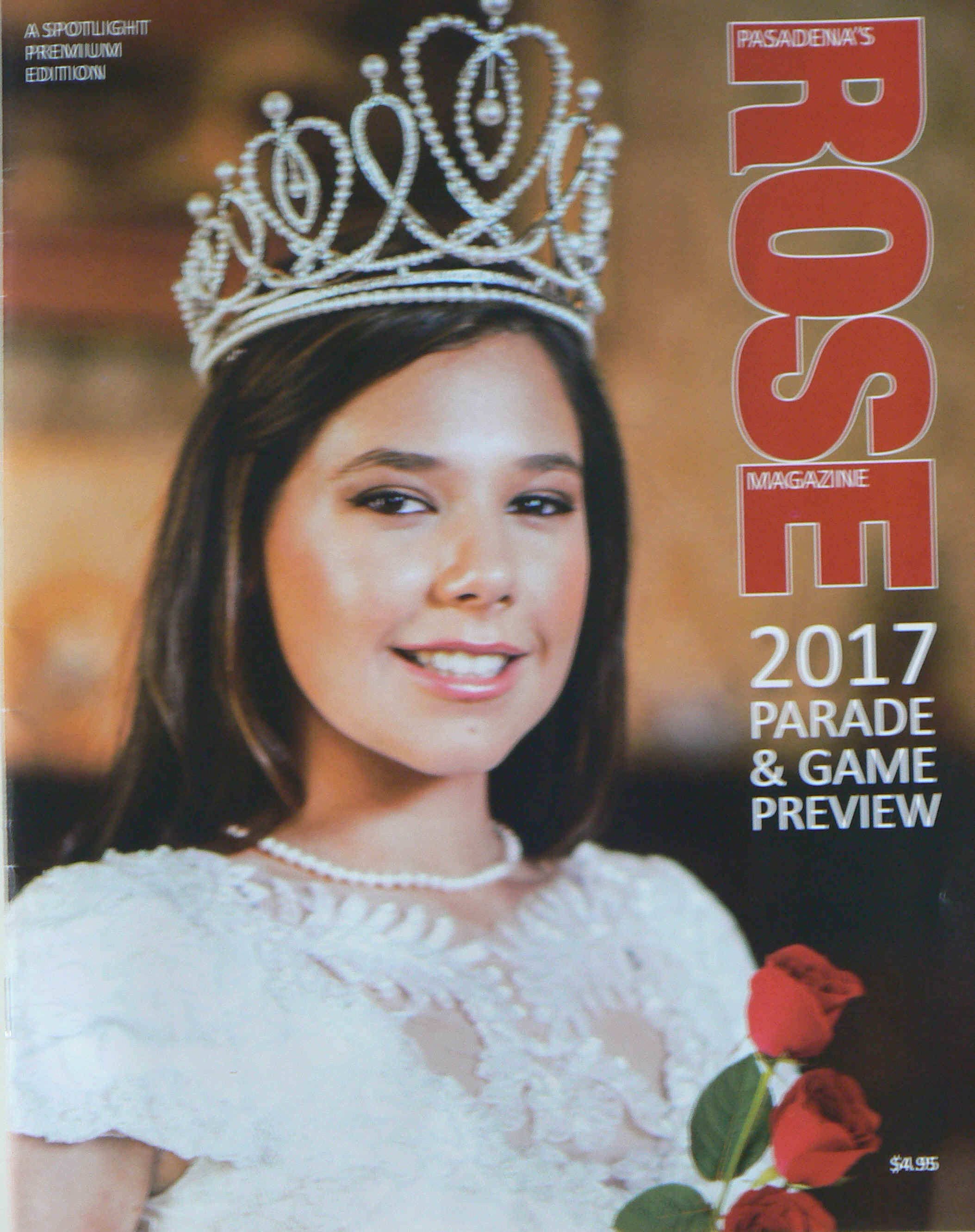
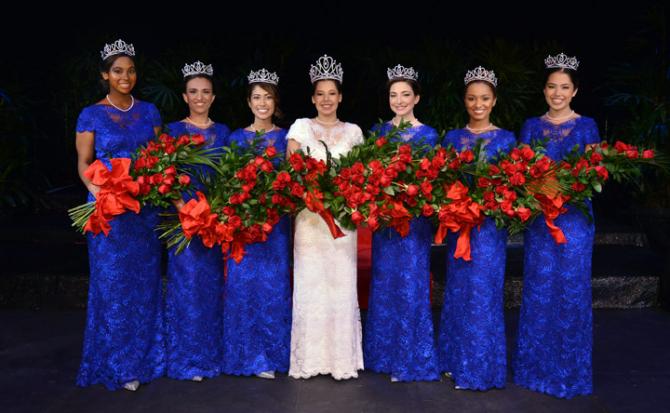
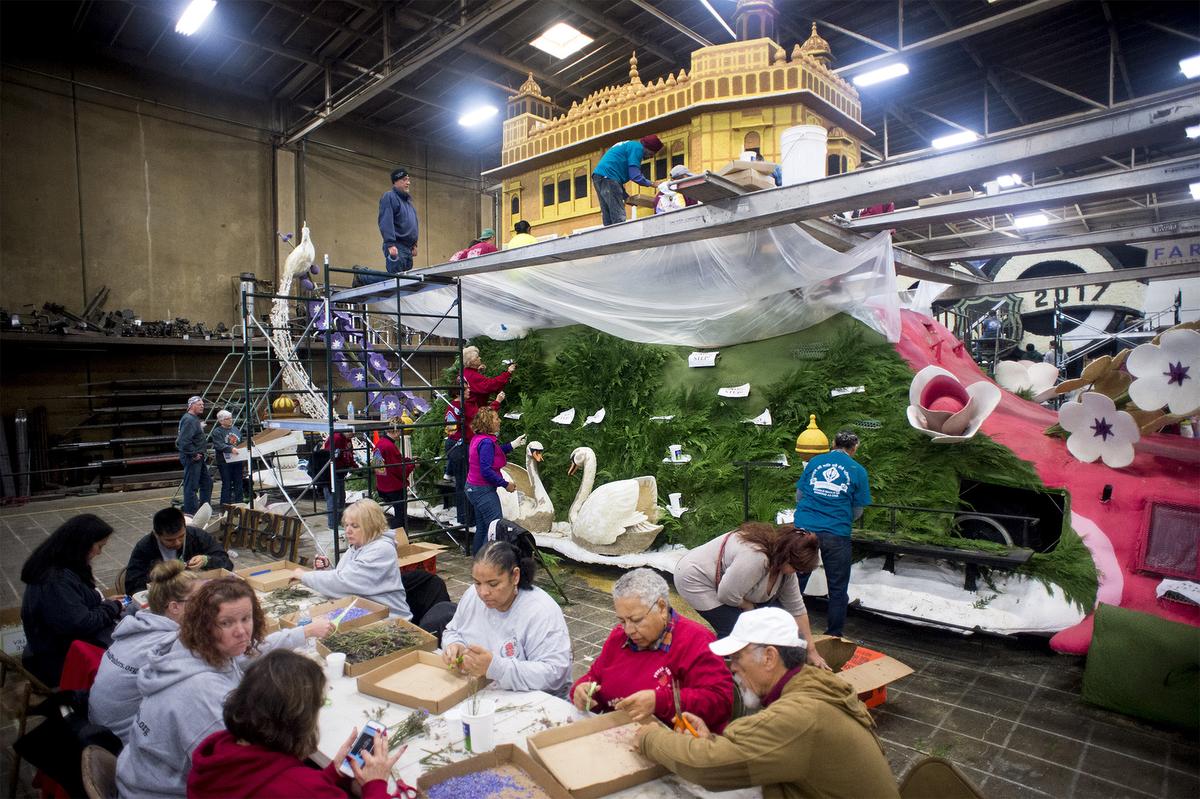



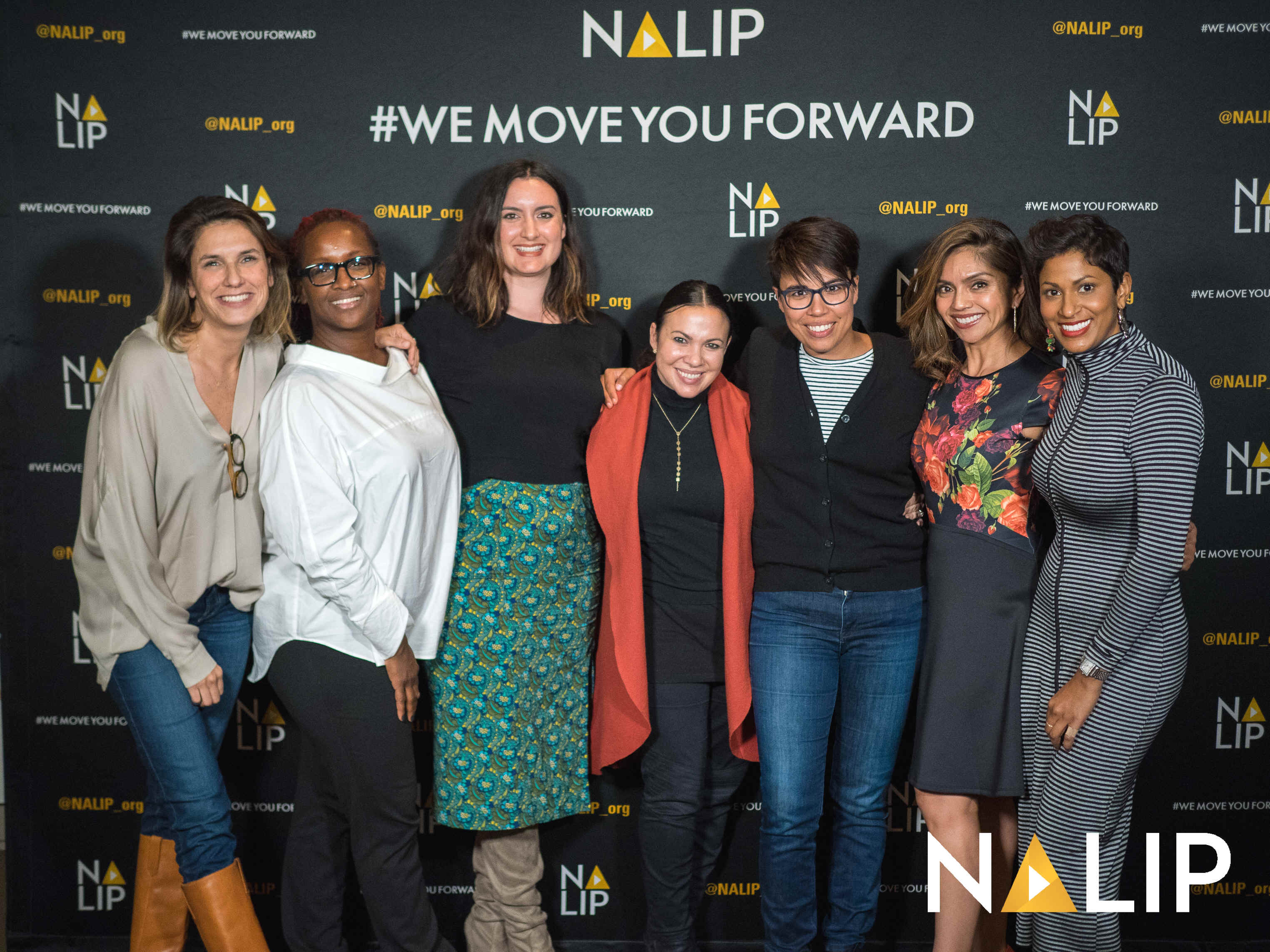





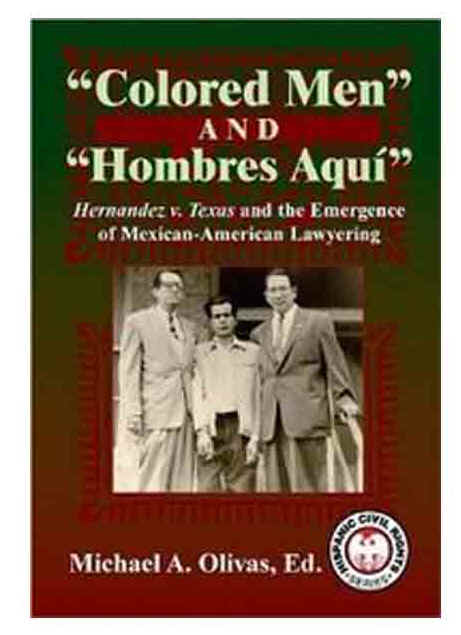
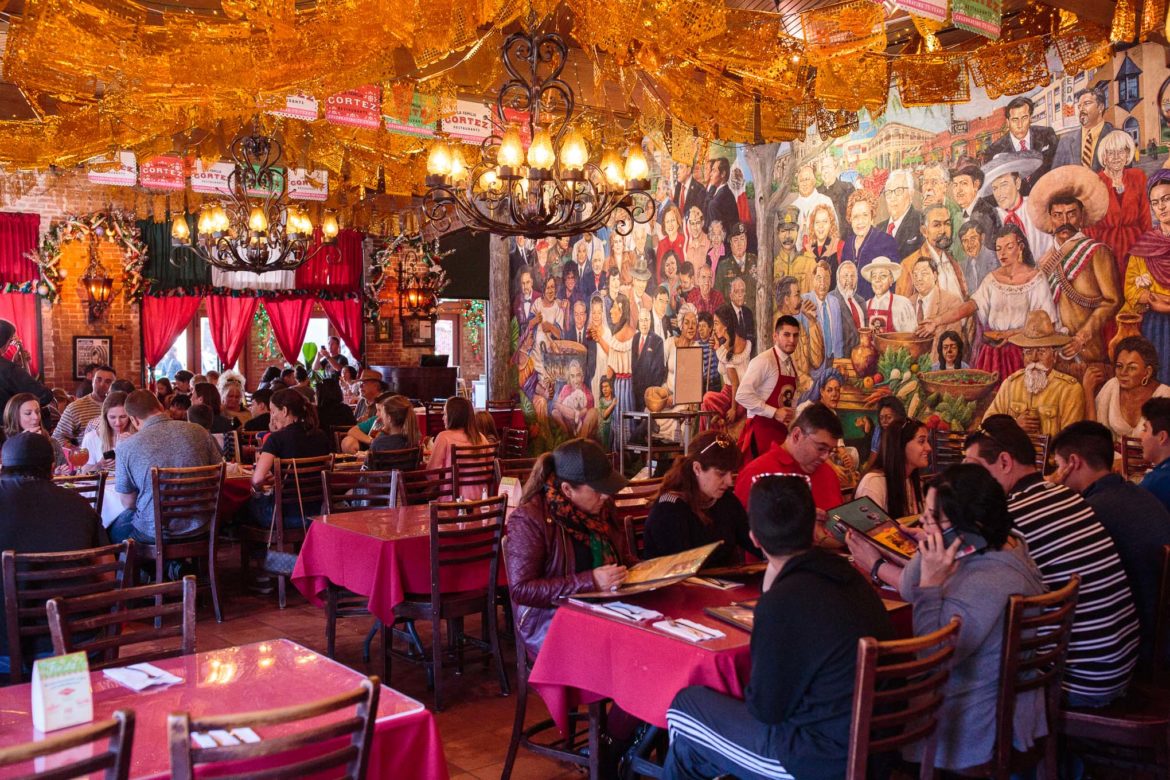
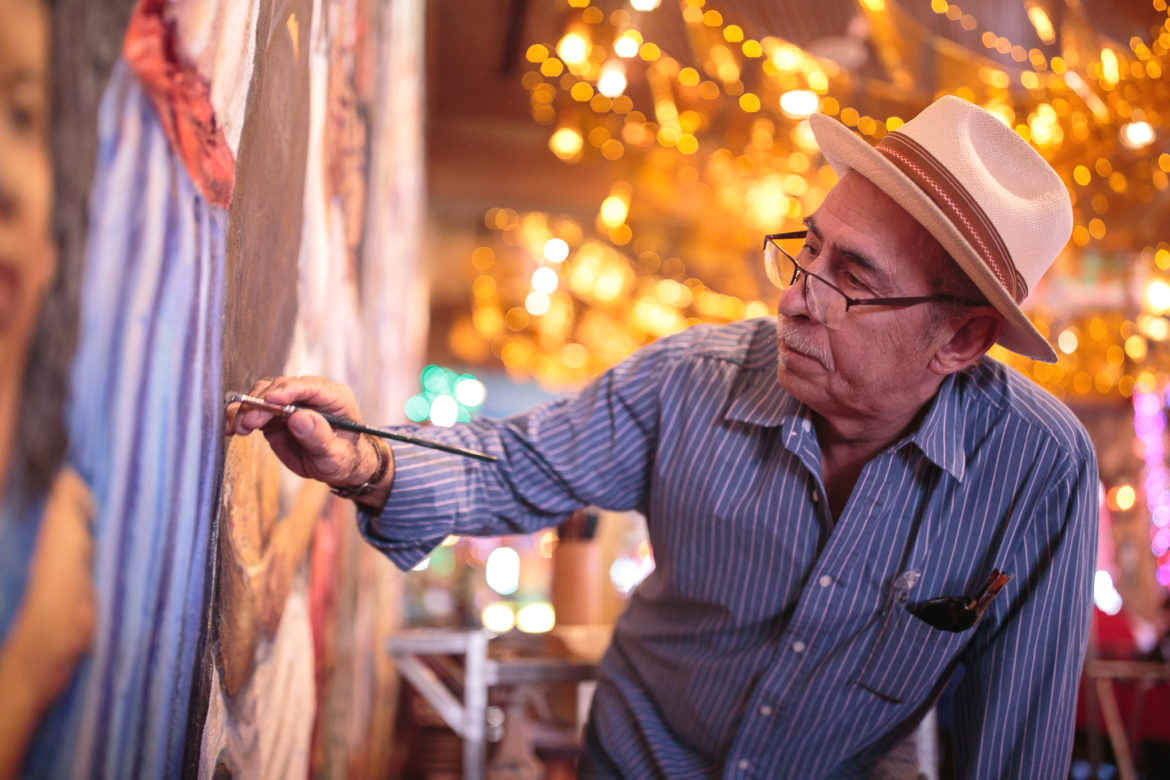 Over the years, the painting evolved to include the likenesses of the
Cortez’s matriarch and patriarch, Cruz and Pedro Cortez, their children,
and some of the family’s third generation as well. It now features more
than 100 influential Latinos who have left their marks on the community,
whether through politics, the arts, or community service.
Over the years, the painting evolved to include the likenesses of the
Cortez’s matriarch and patriarch, Cruz and Pedro Cortez, their children,
and some of the family’s third generation as well. It now features more
than 100 influential Latinos who have left their marks on the community,
whether through politics, the arts, or community service.
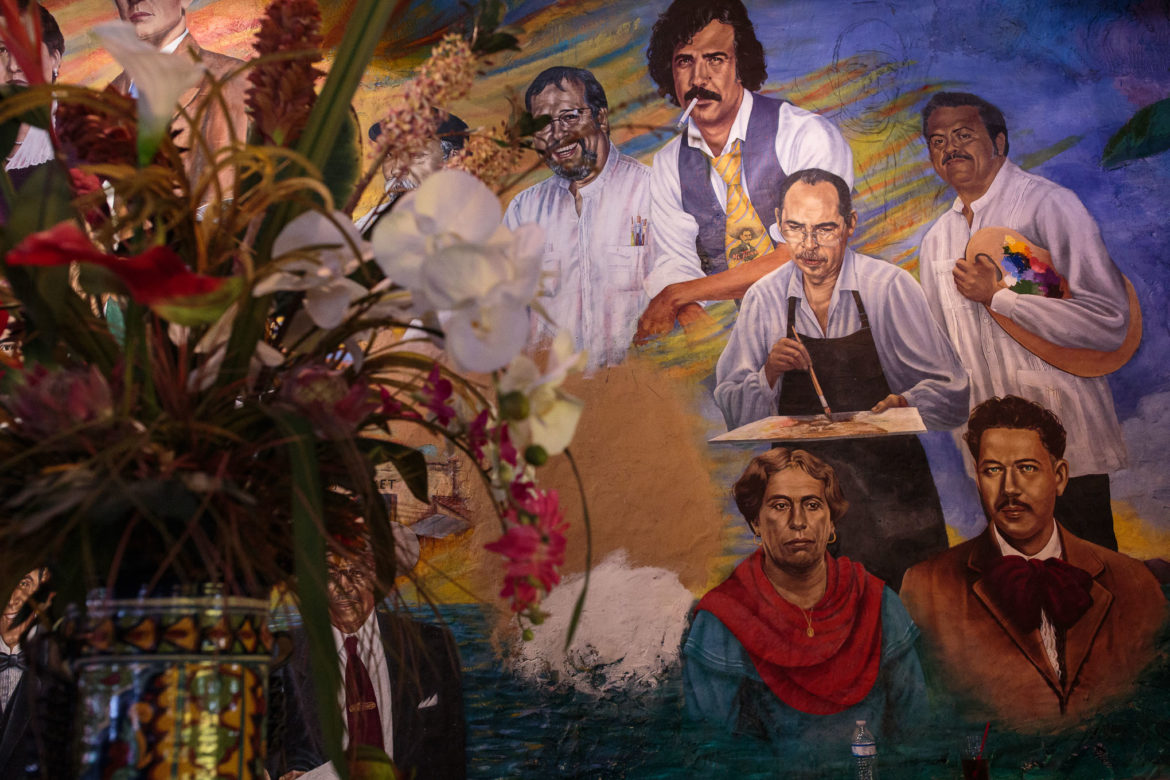
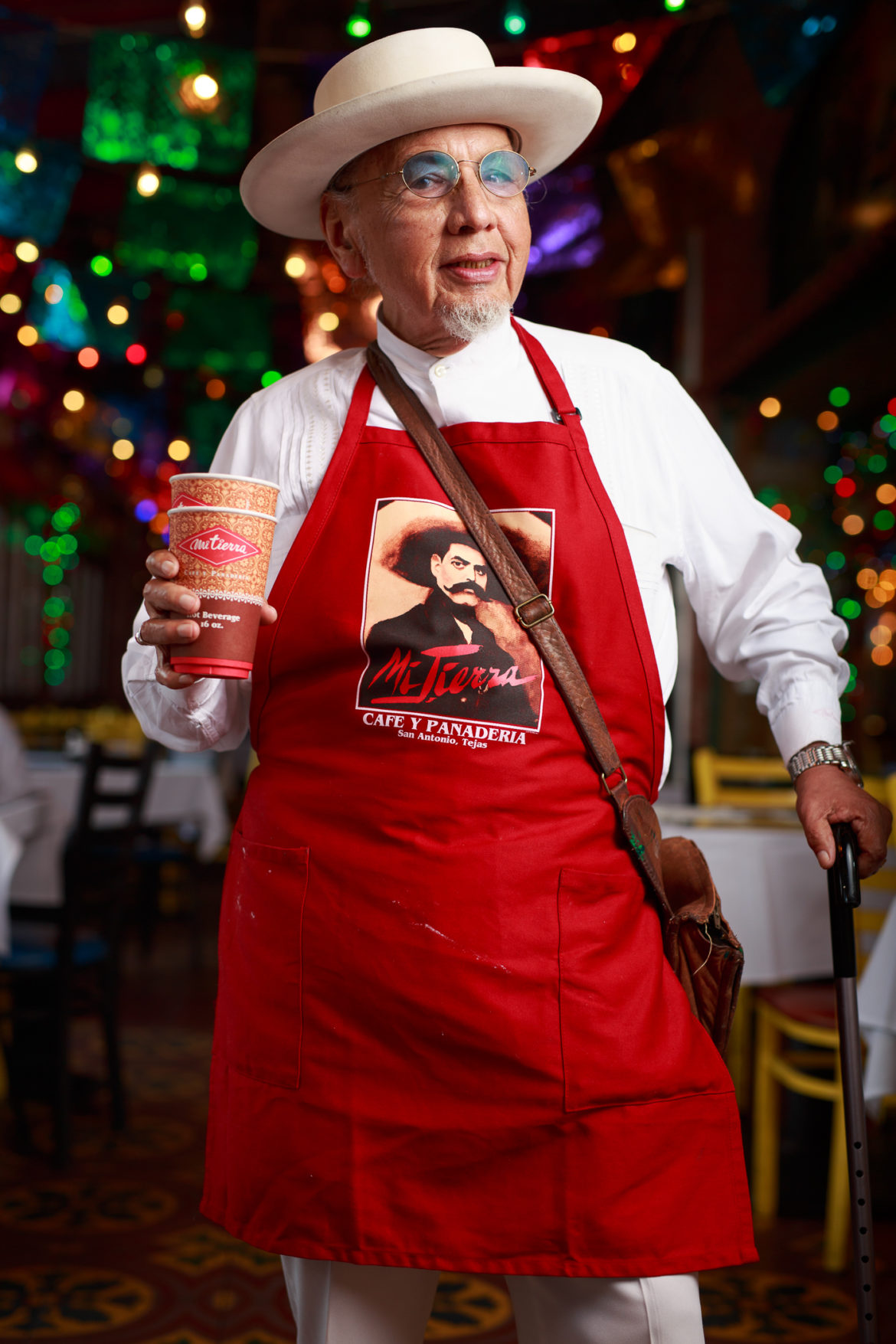

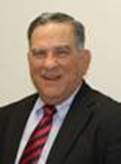
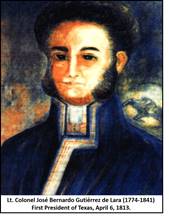


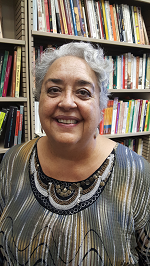
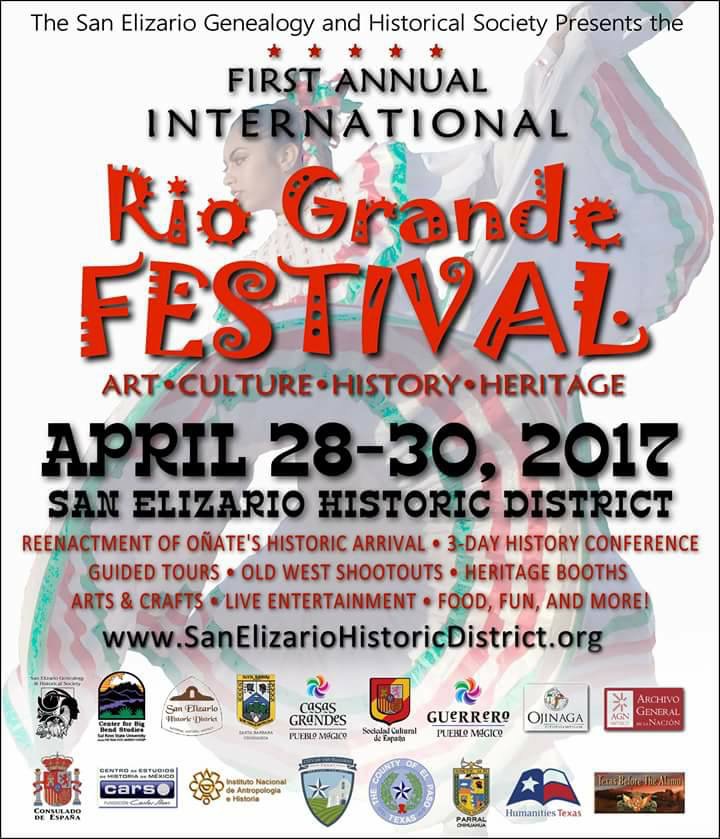
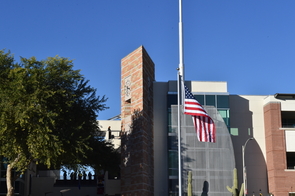
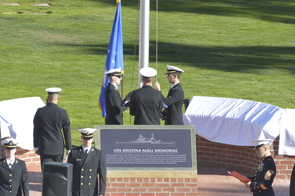


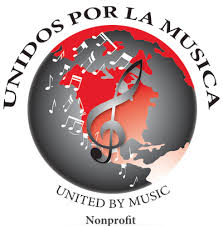


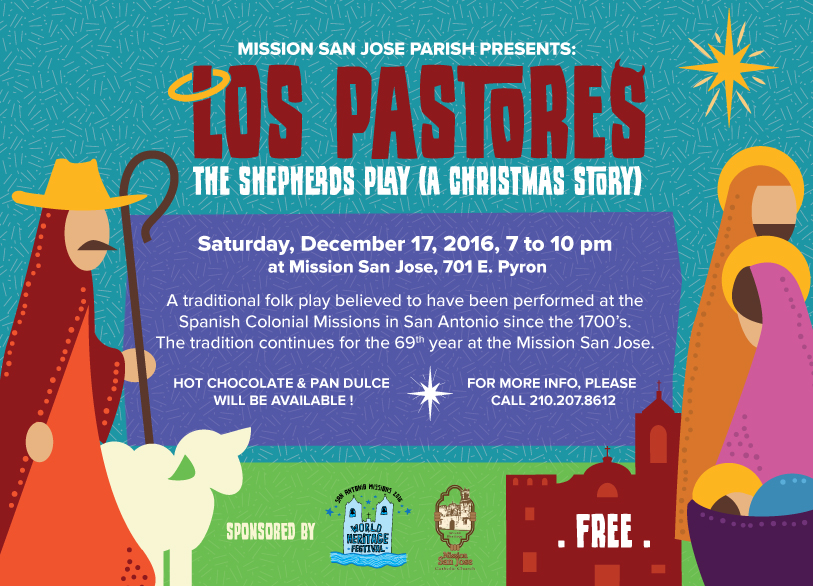
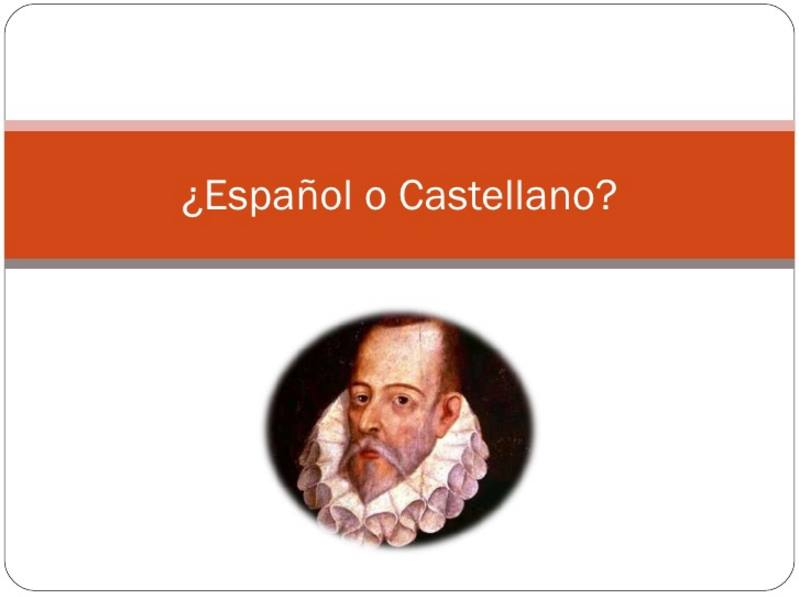
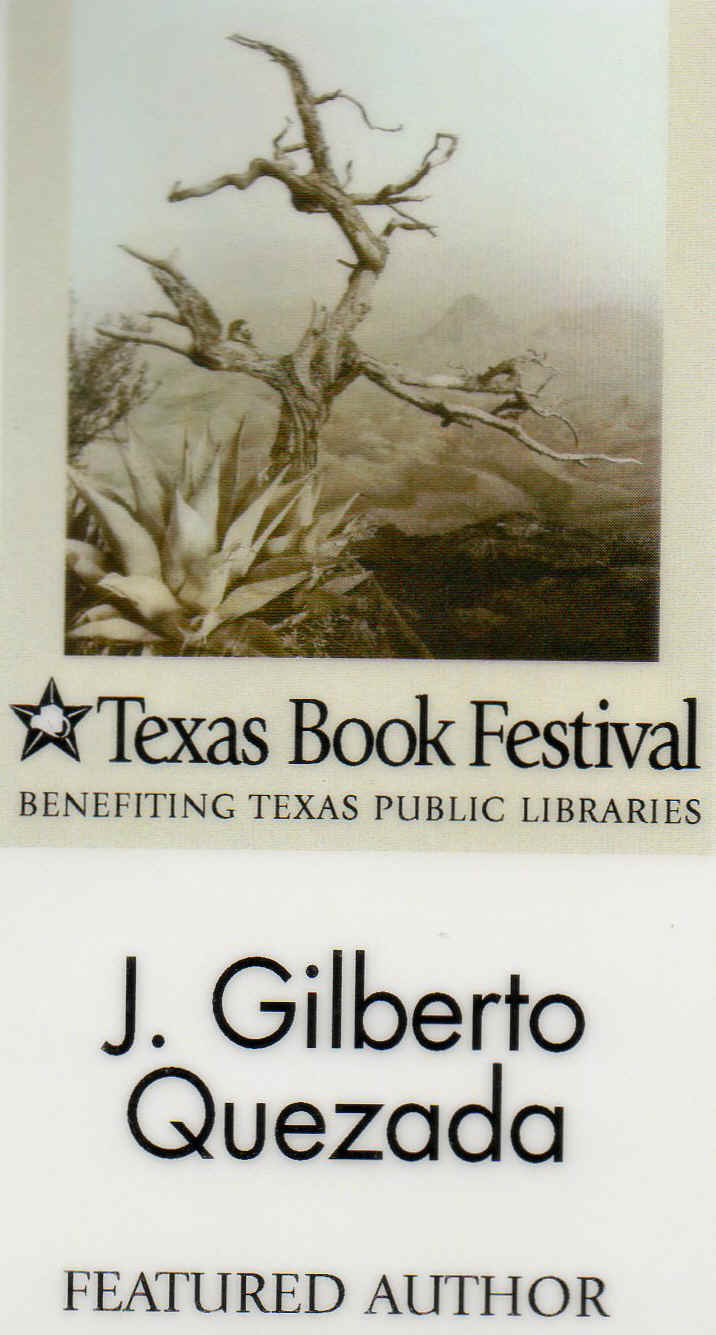
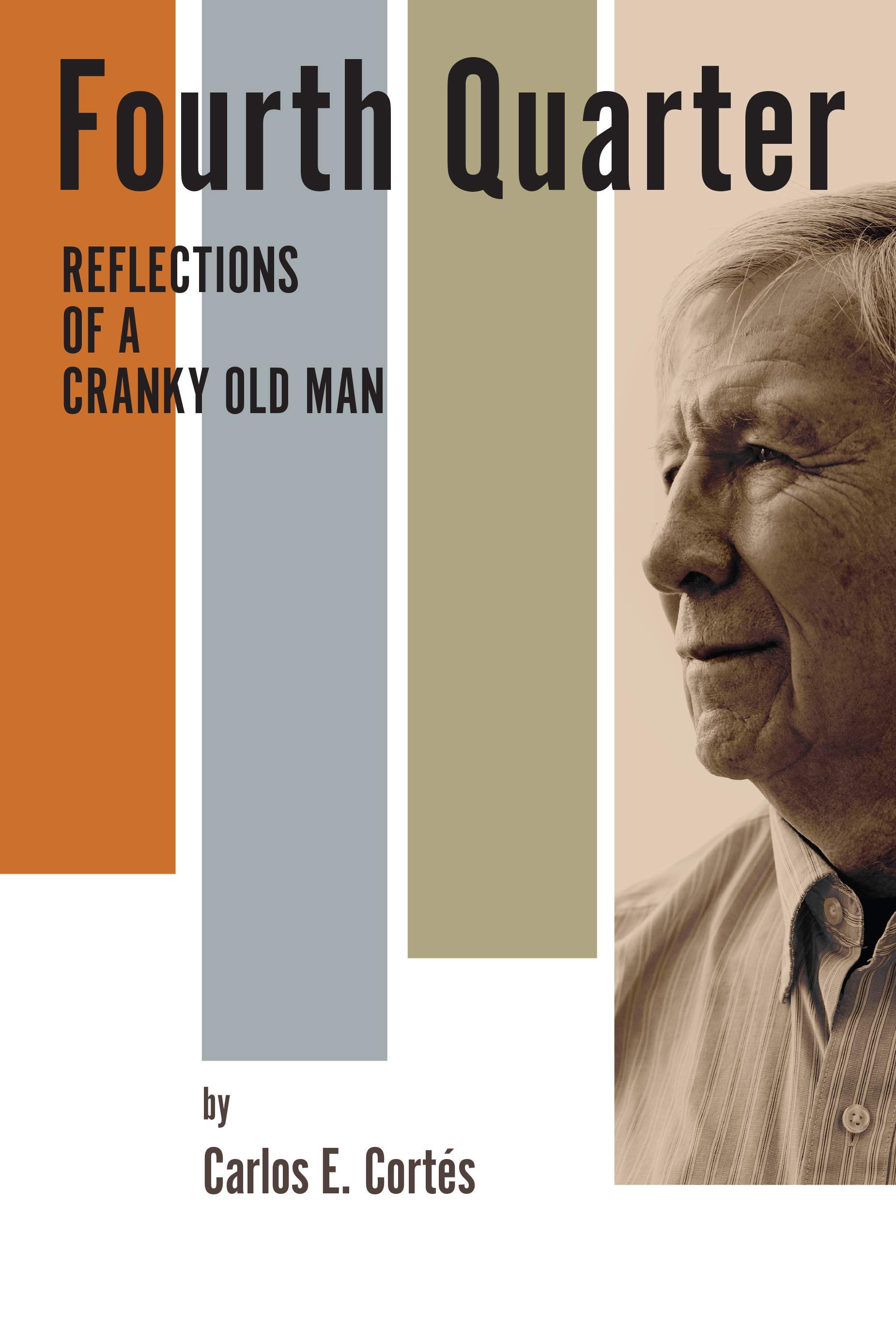

 Vet
Hunters is a grass roots movement that was started by one soldier, Joe
G. Leal, who vowed to honor his fallen comrades, by serving the living
and leaving no veteran behind. Search and rescue missions in the
streets of America were initiated and ‘vet hunting,” was born.
Vet
Hunters is a grass roots movement that was started by one soldier, Joe
G. Leal, who vowed to honor his fallen comrades, by serving the living
and leaving no veteran behind. Search and rescue missions in the
streets of America were initiated and ‘vet hunting,” was born. T
T

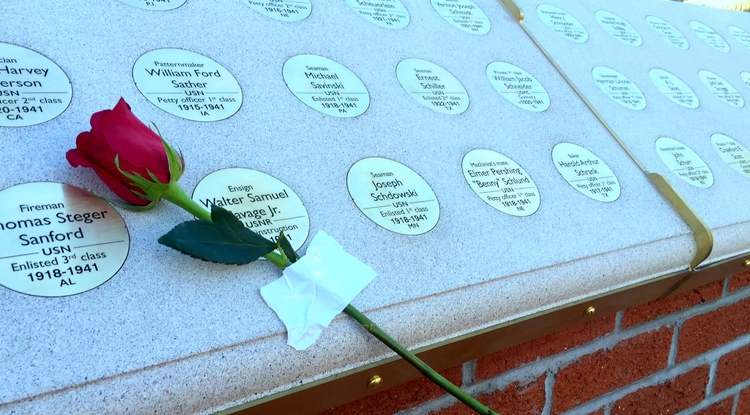
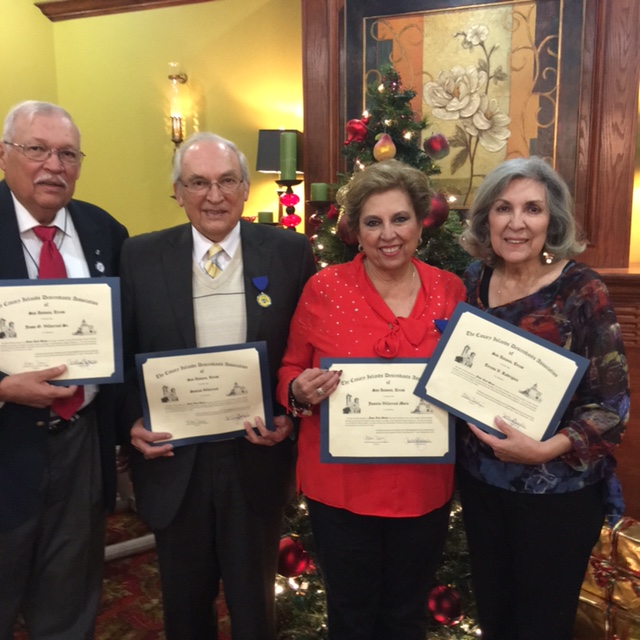
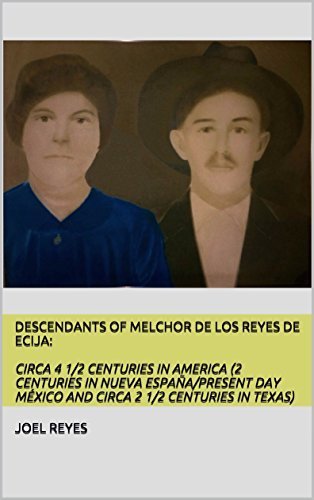





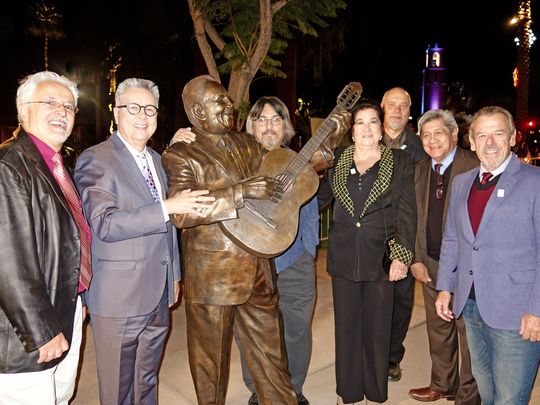
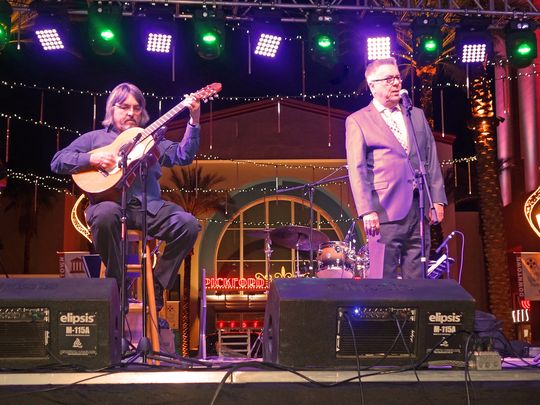
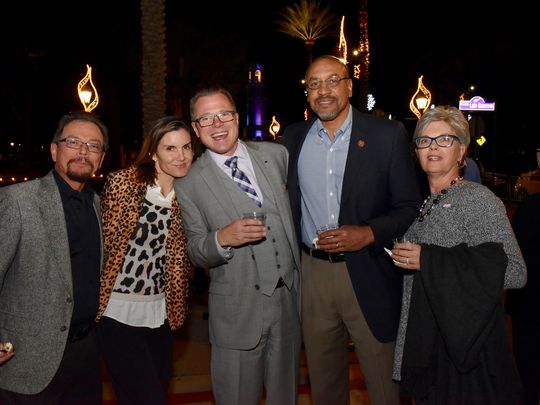
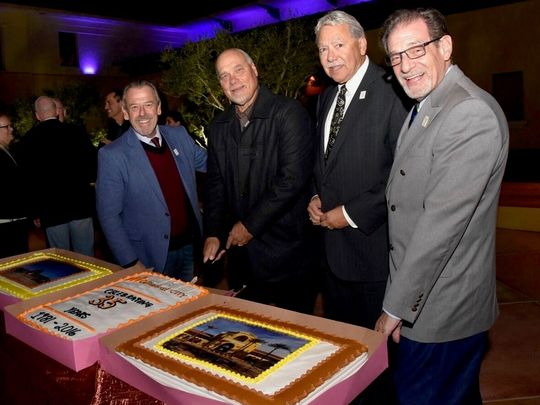
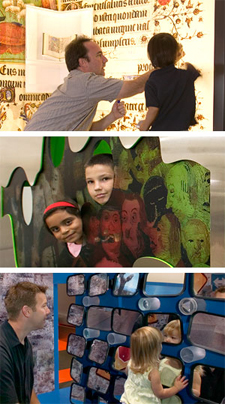 Decorate a book page in the drawings and manuscripts cove (top); join the cast of a 19th-century painting in the paintings cove (middle); explore lenses and mirrors in the photographs cove (bottom).
Decorate a book page in the drawings and manuscripts cove (top); join the cast of a 19th-century painting in the paintings cove (middle); explore lenses and mirrors in the photographs cove (bottom).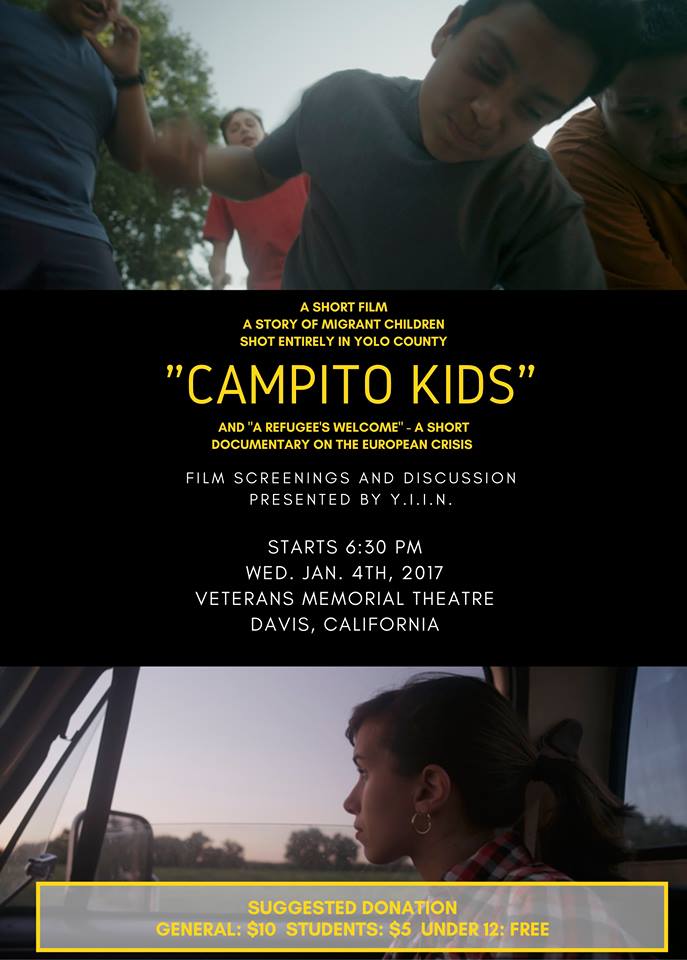
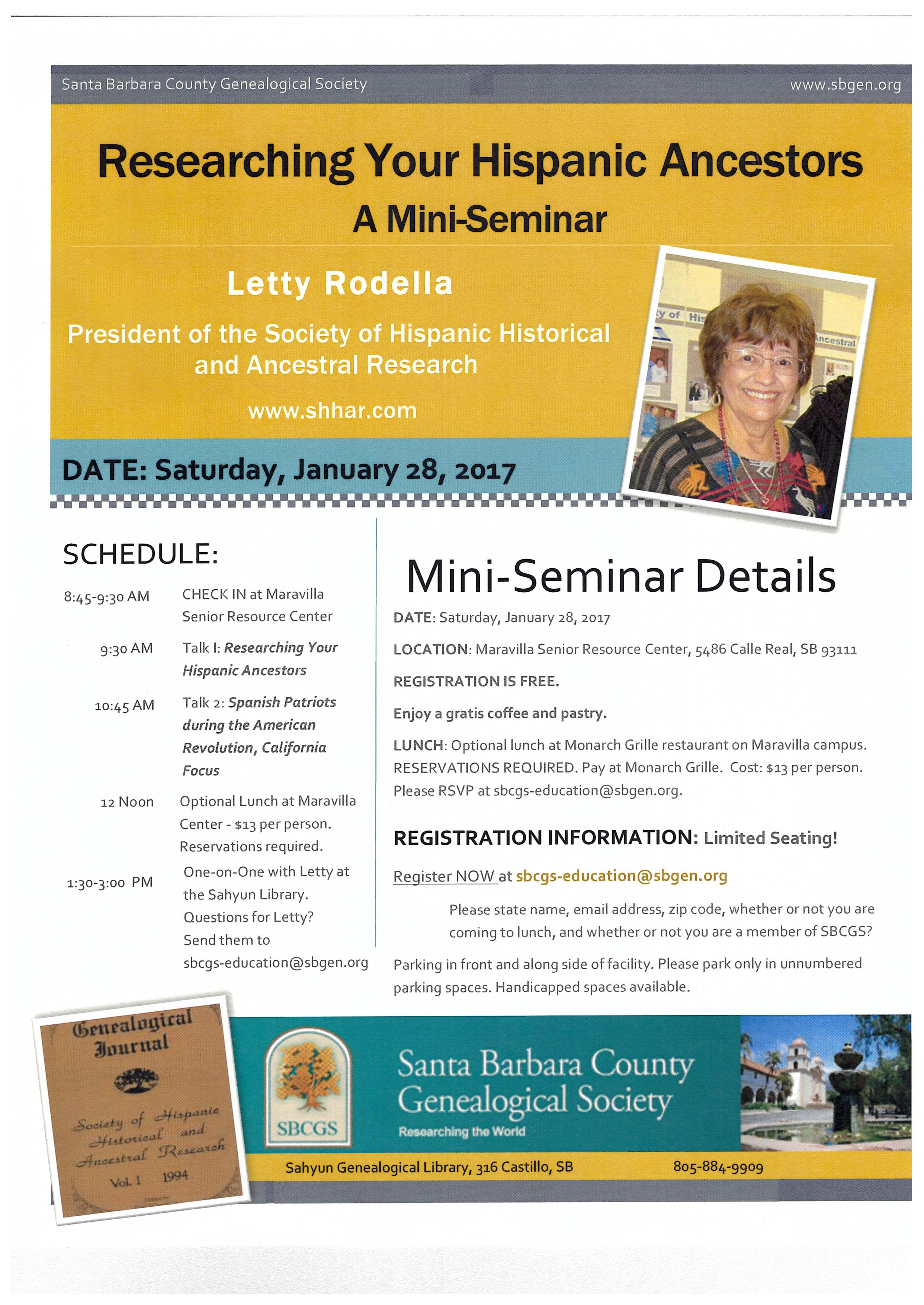
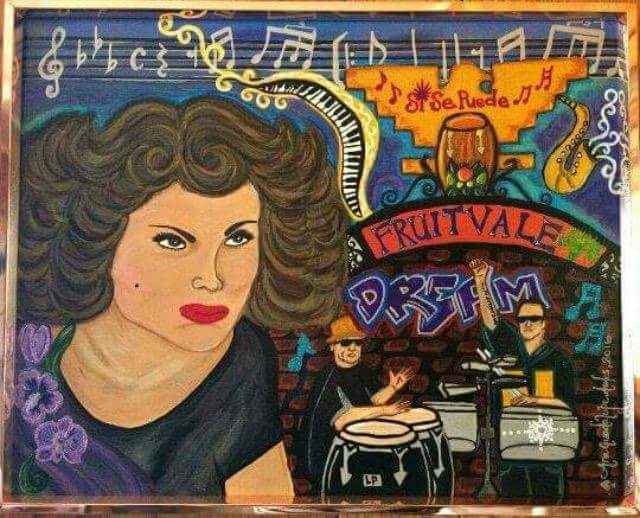
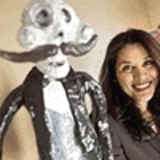
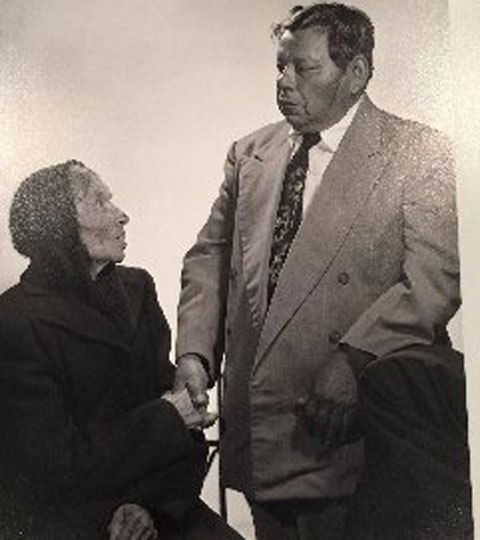
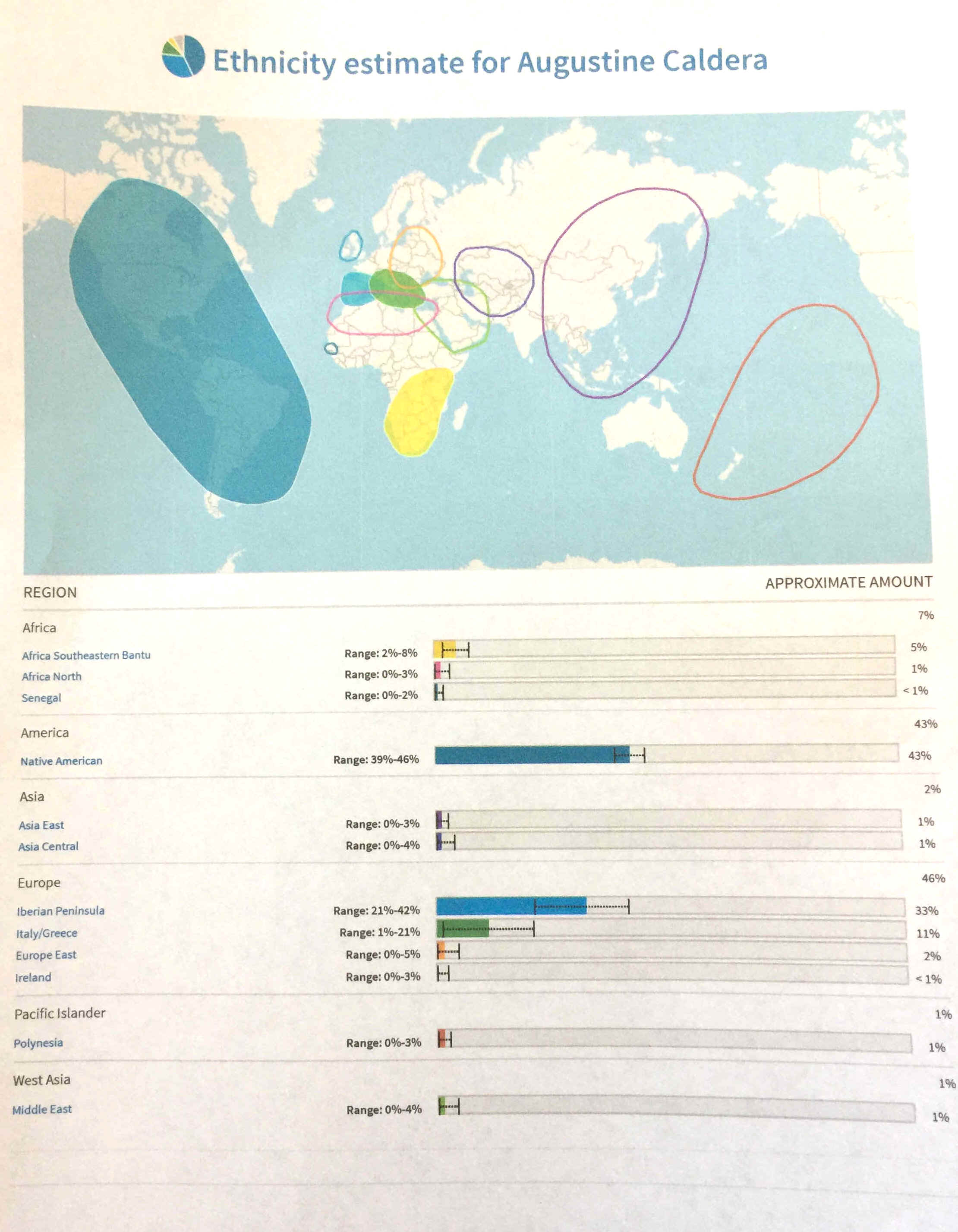
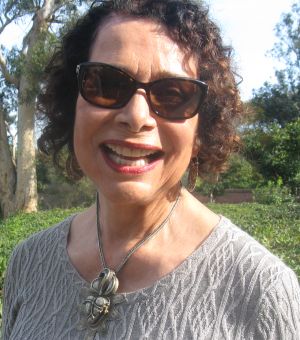
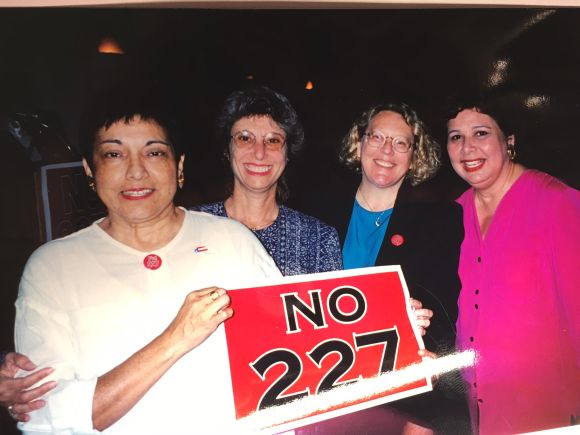
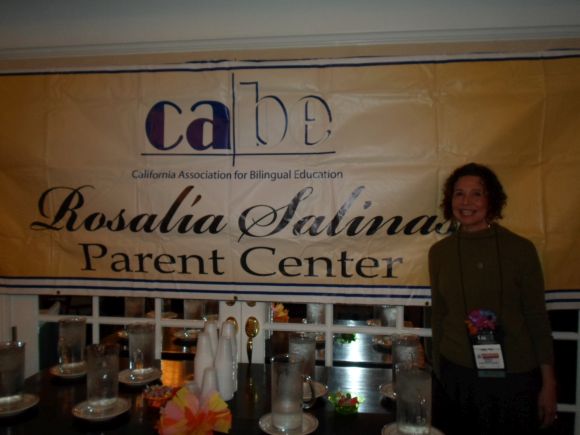

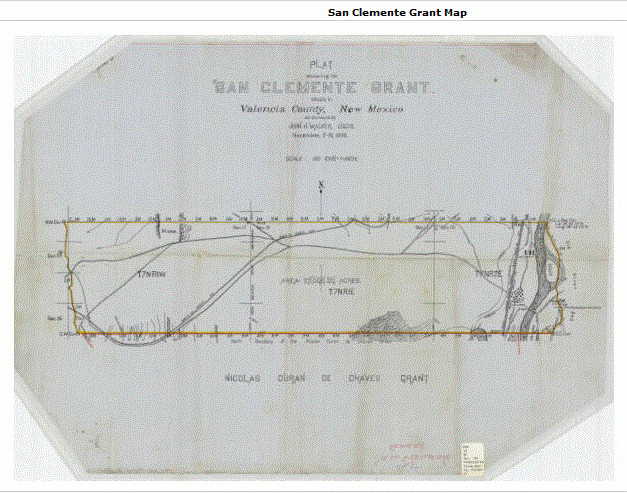

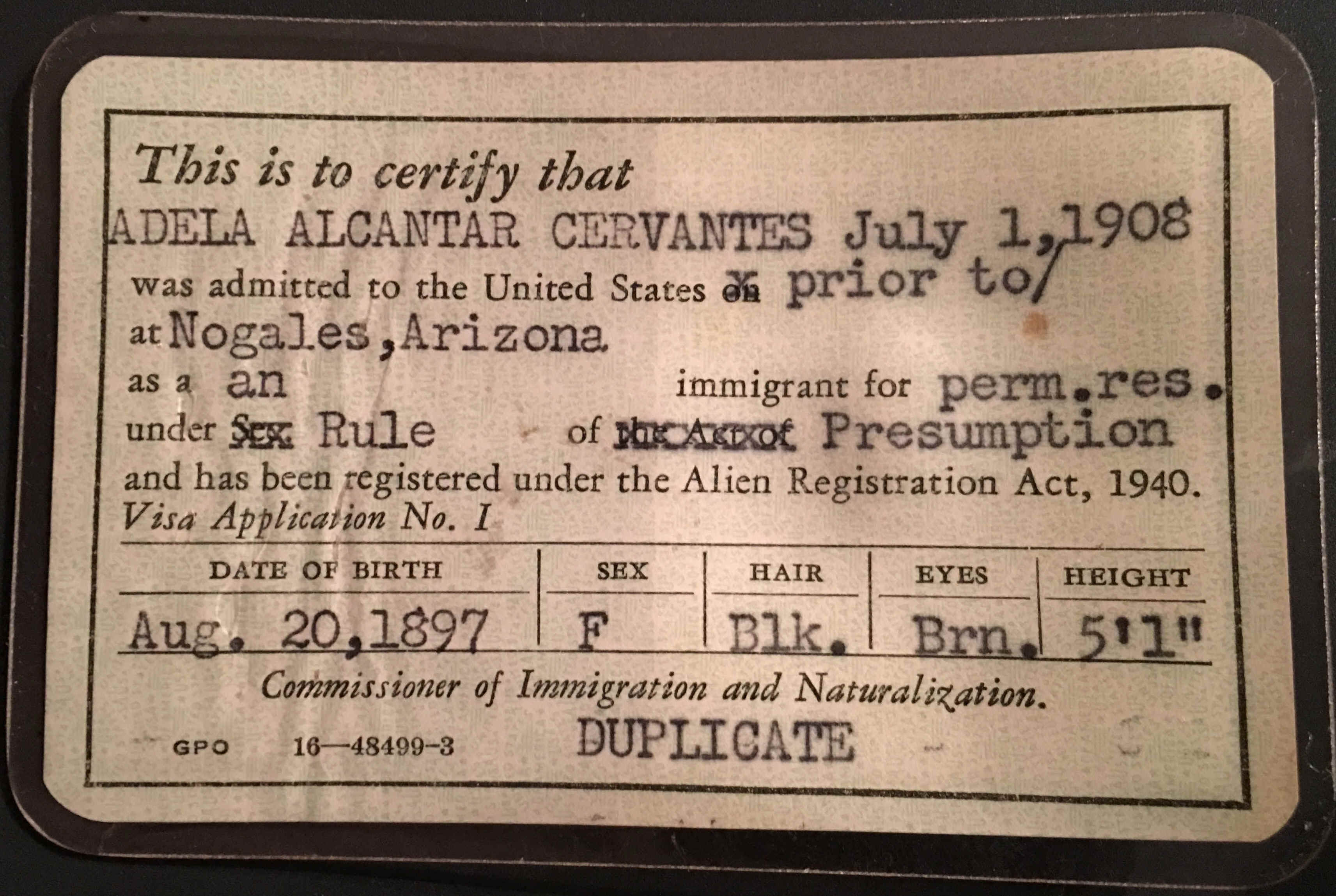
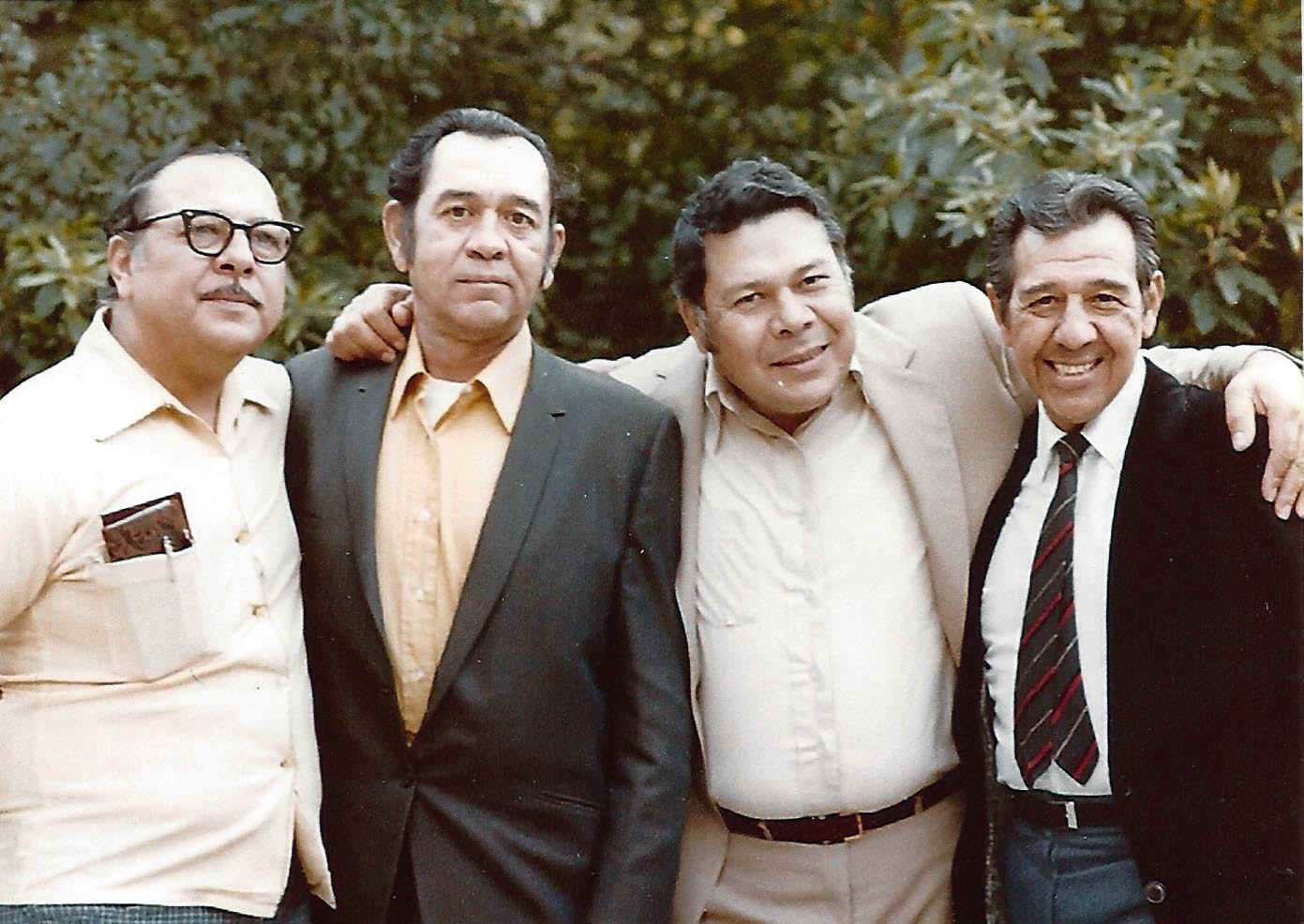
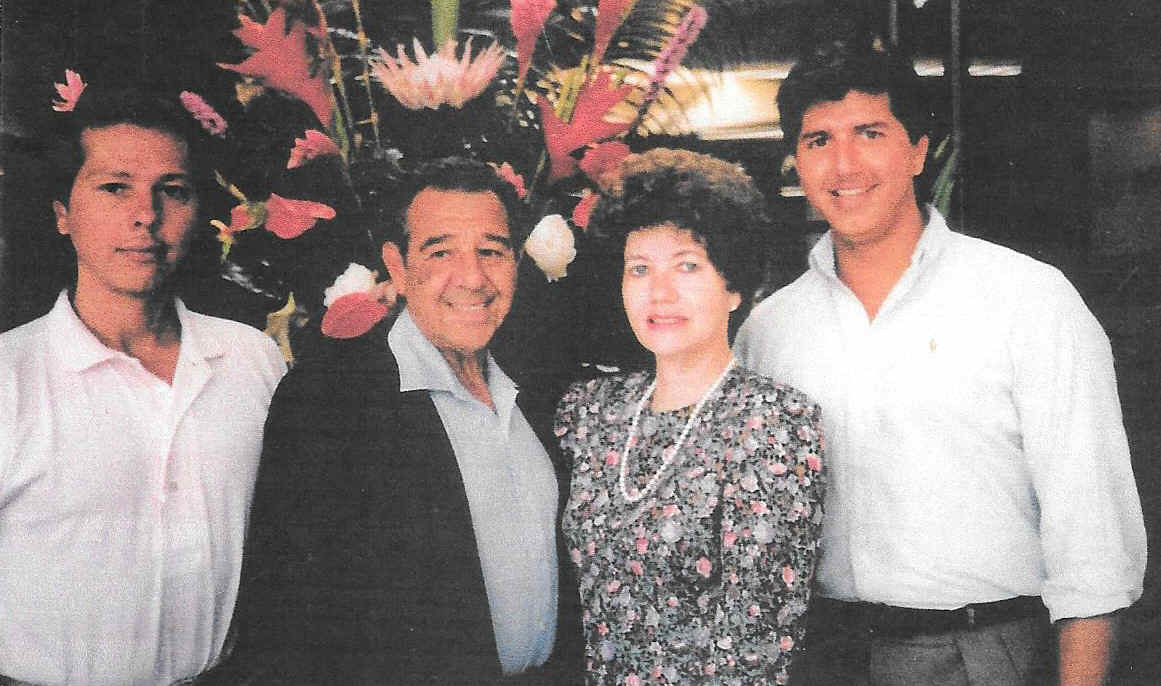 My wife, Shirley and me, our sons, Mark on the left,
oldest, 39 years old. Tracy on the right side 37.
My wife, Shirley and me, our sons, Mark on the left,
oldest, 39 years old. Tracy on the right side 37. 
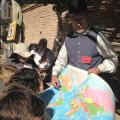 The
Presidio Museum invites you to consider becoming a member. Your
The
Presidio Museum invites you to consider becoming a member. Your 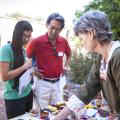

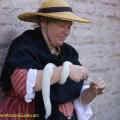
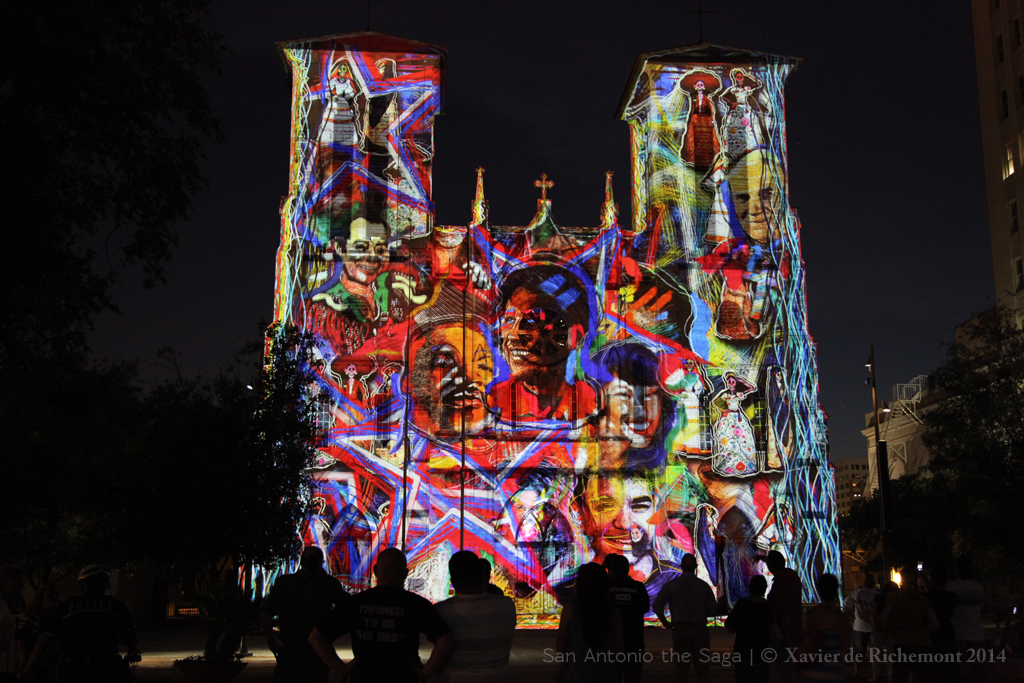
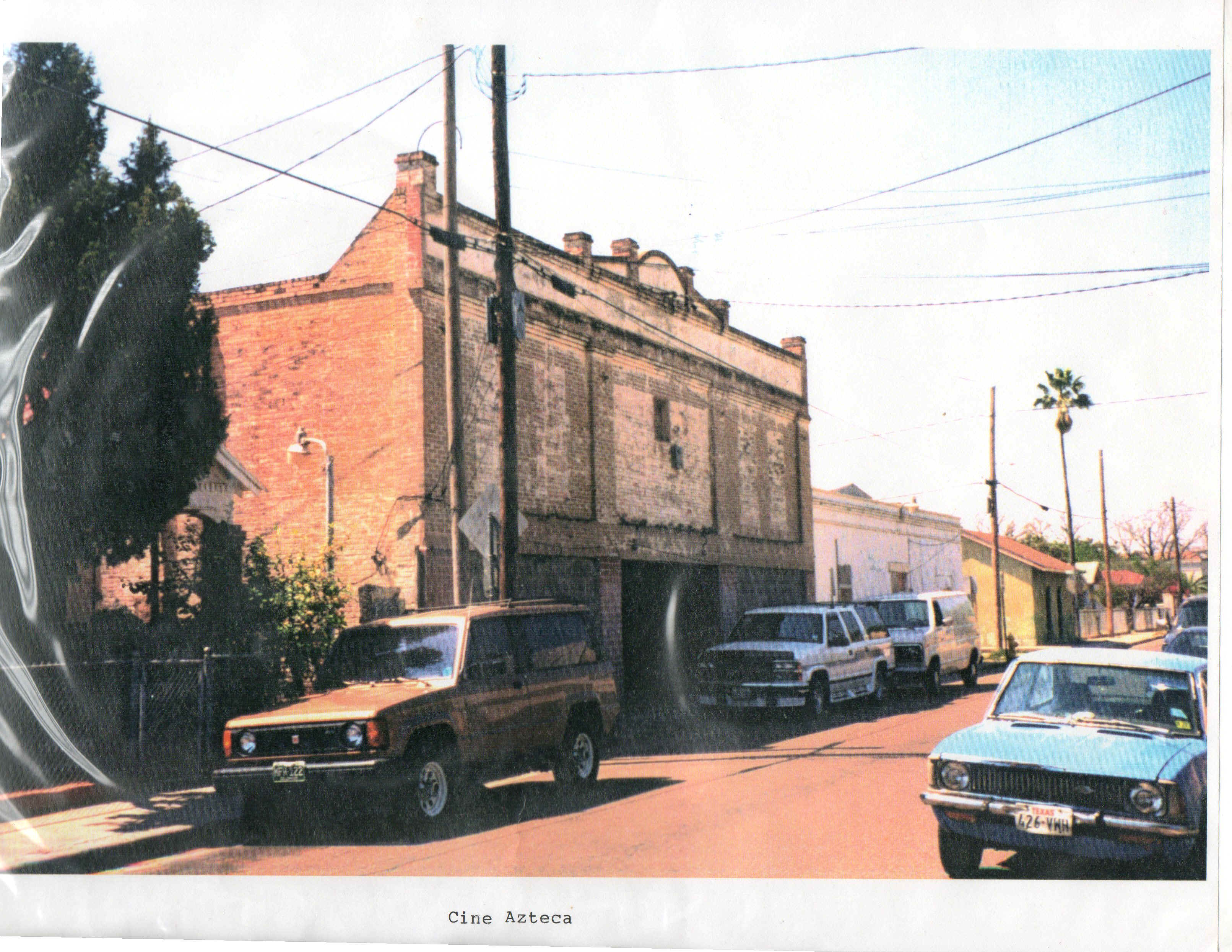
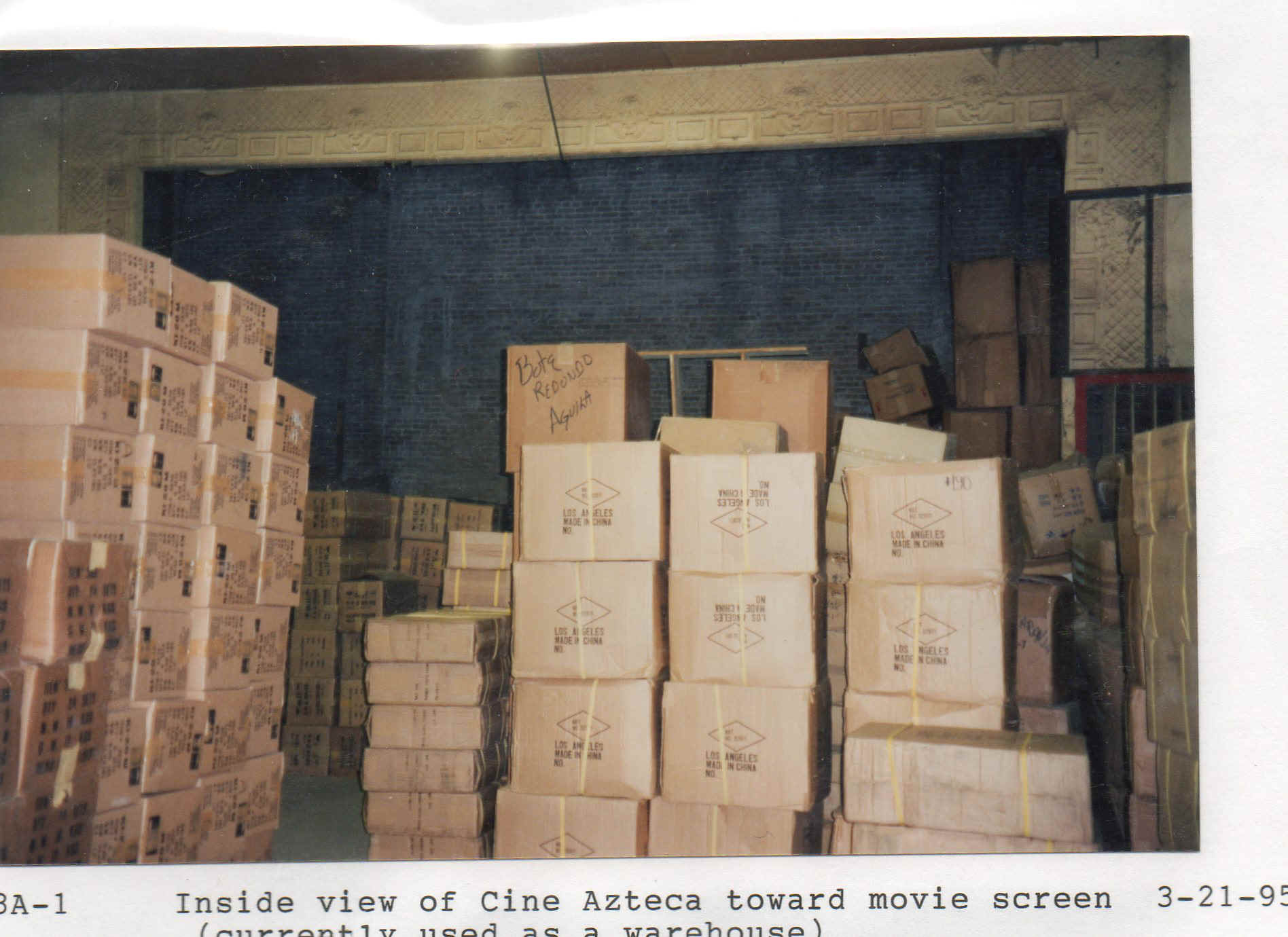
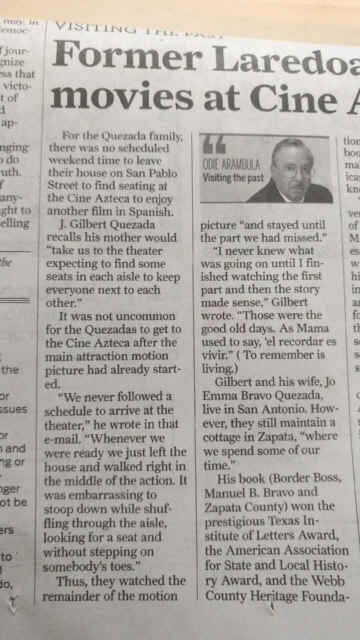
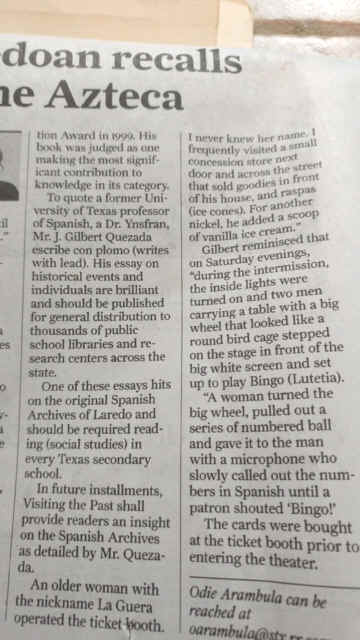
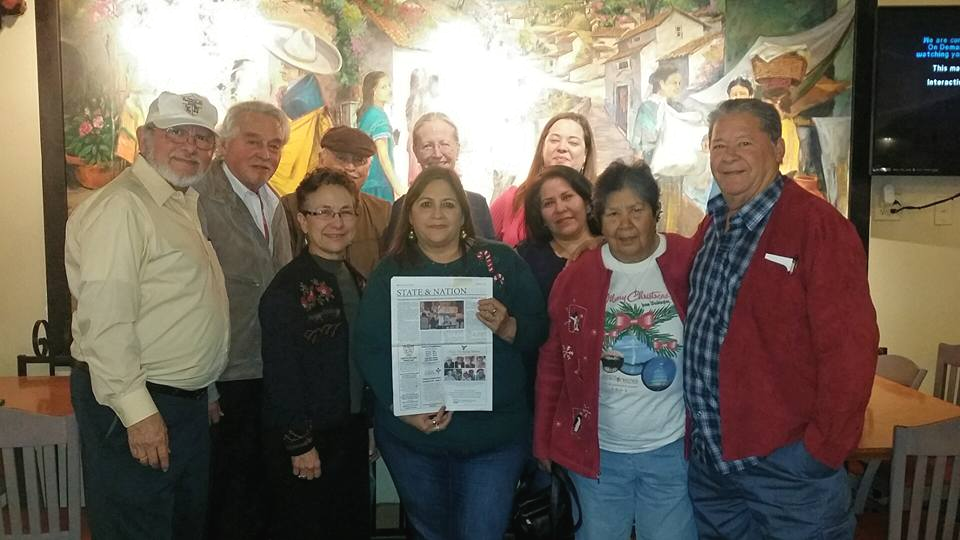
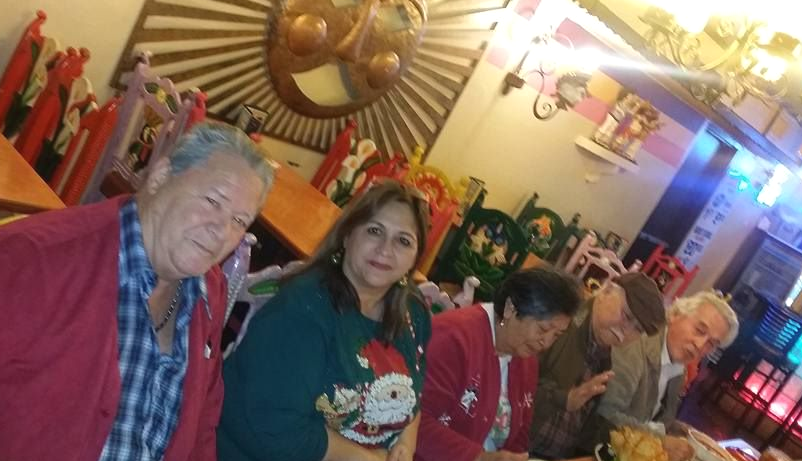
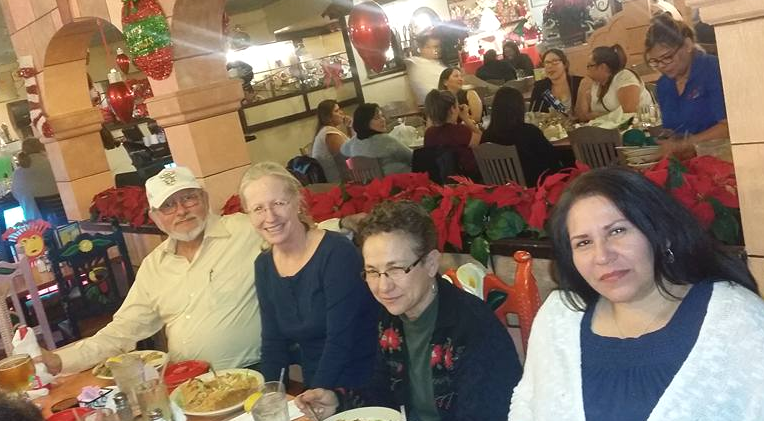
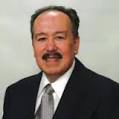

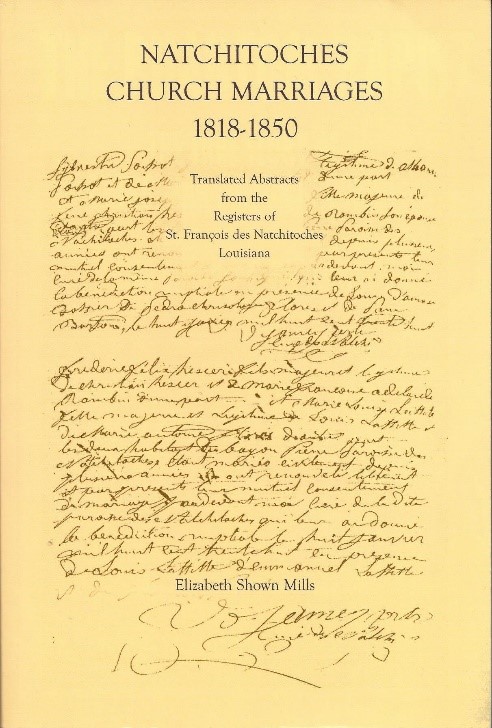
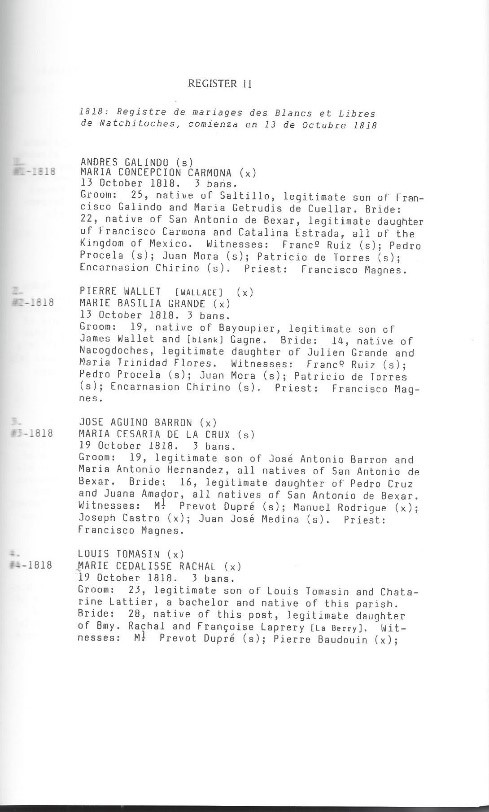
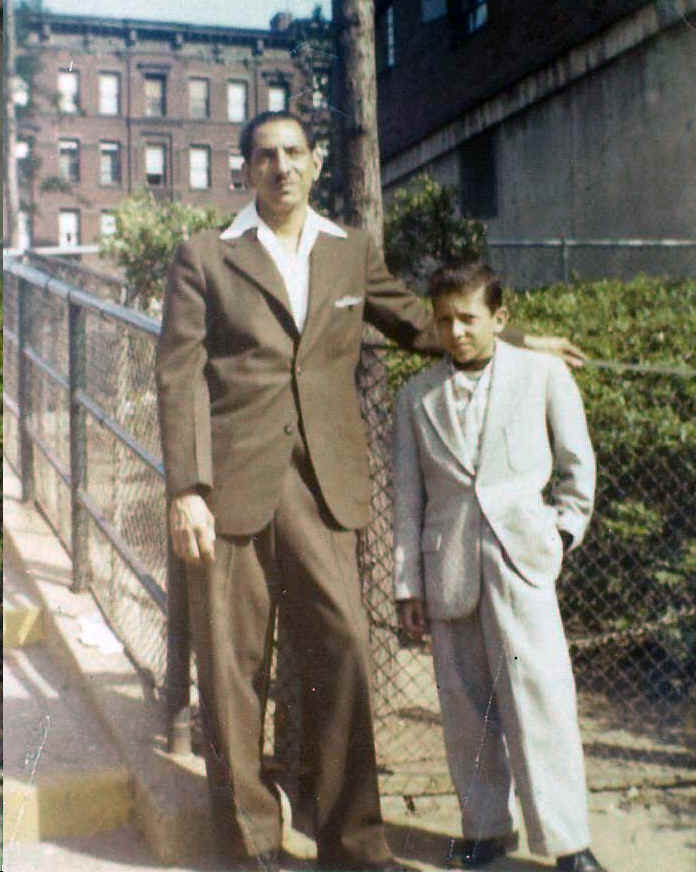
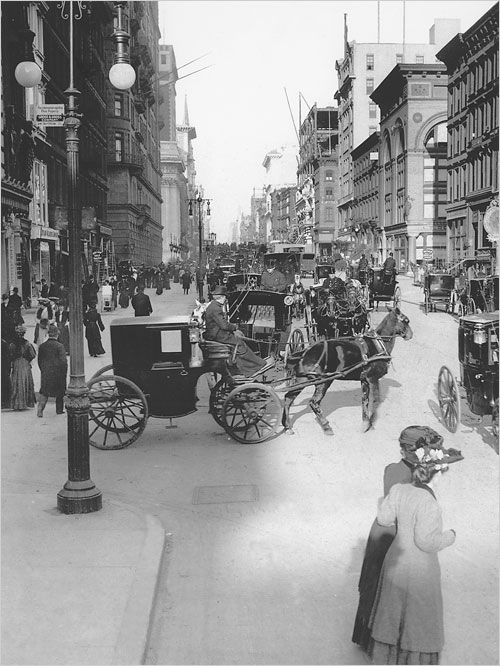
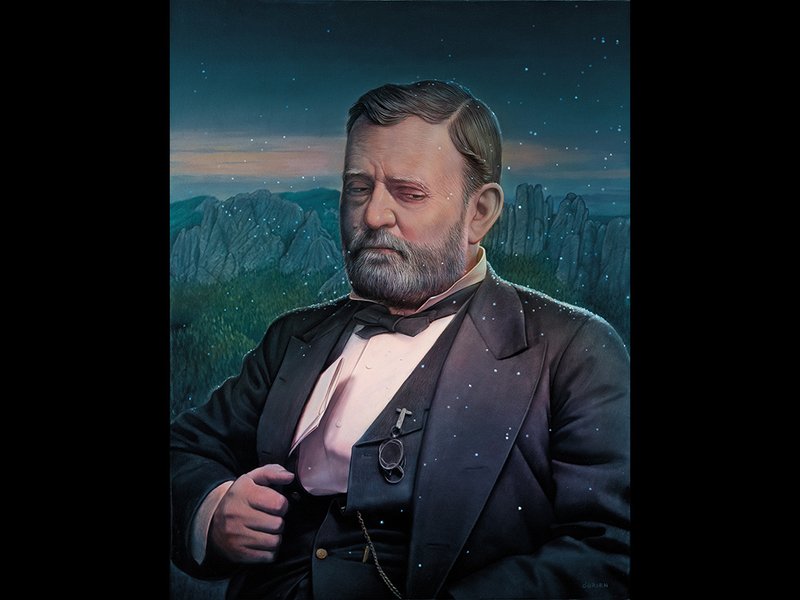
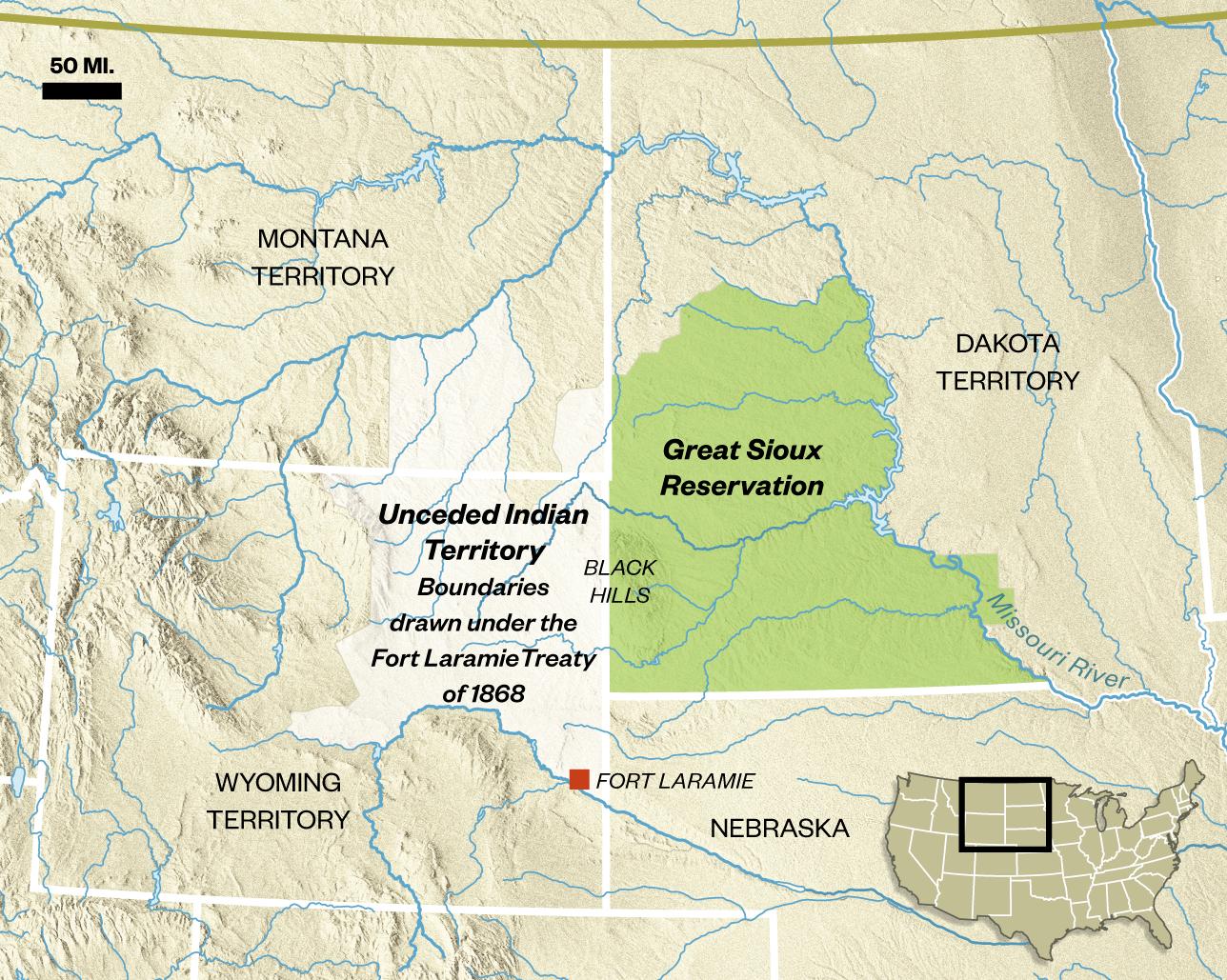
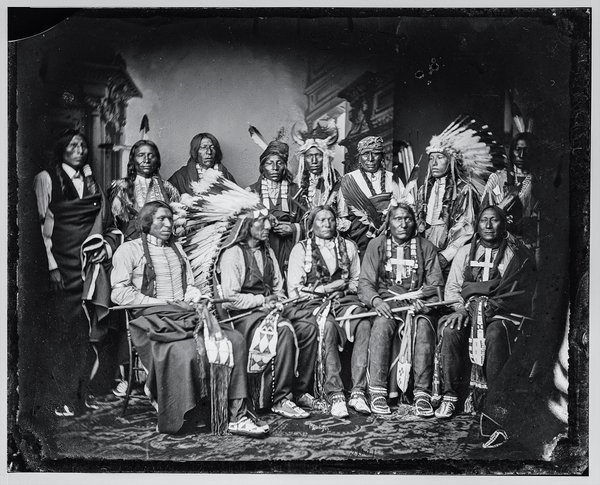
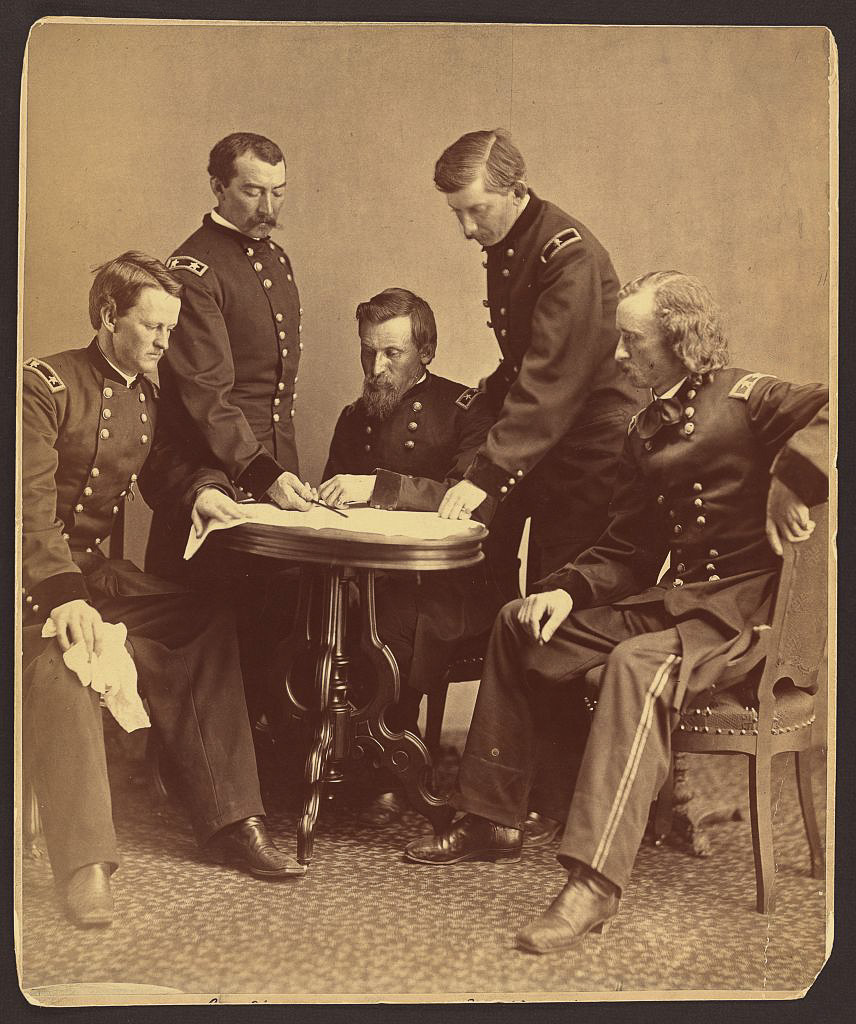
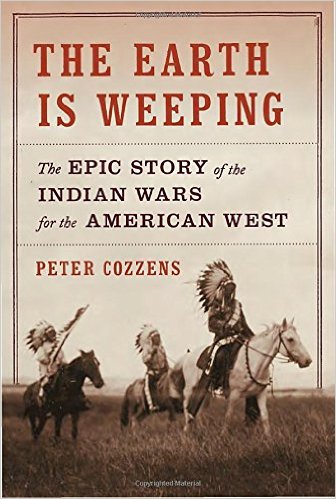
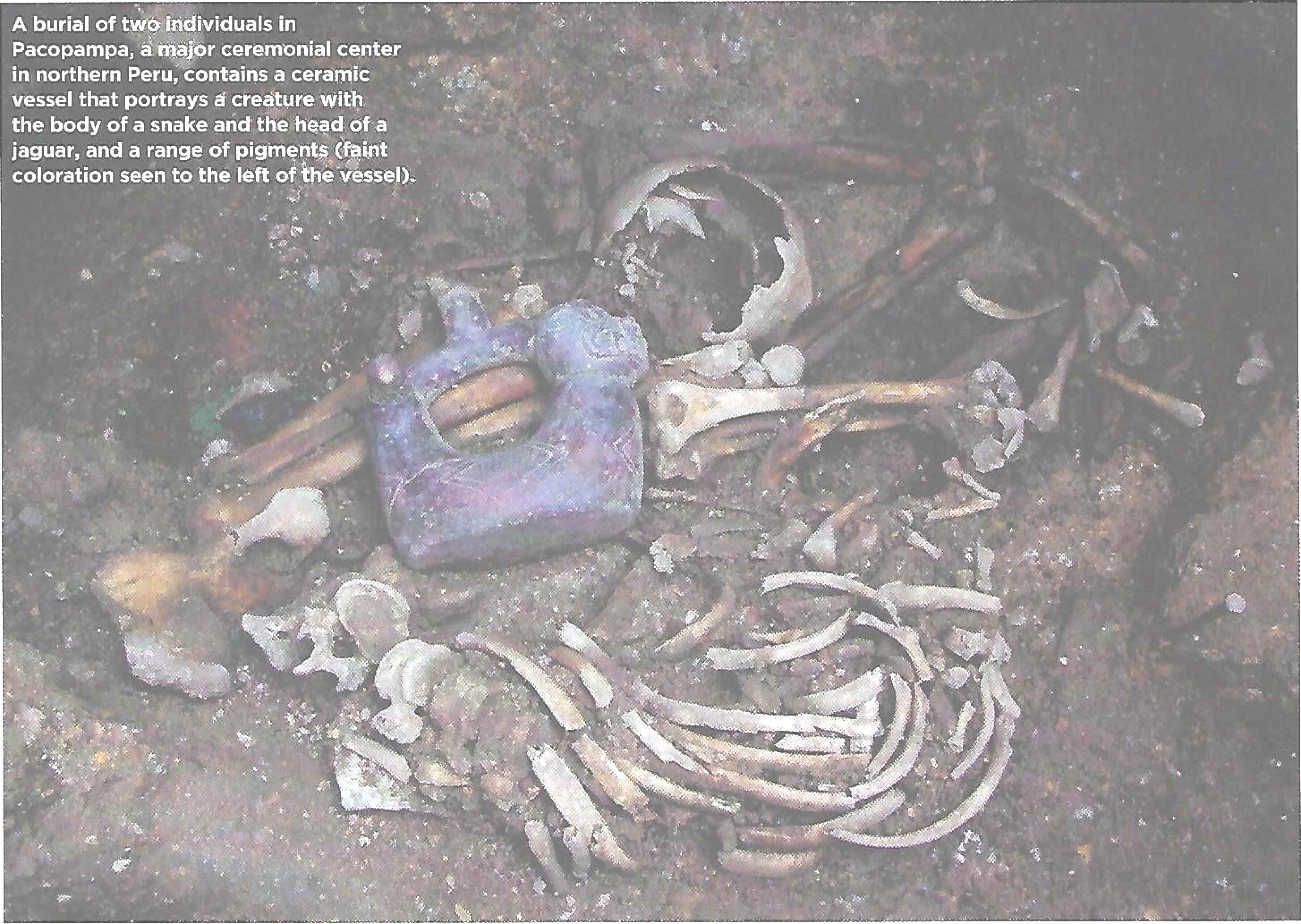
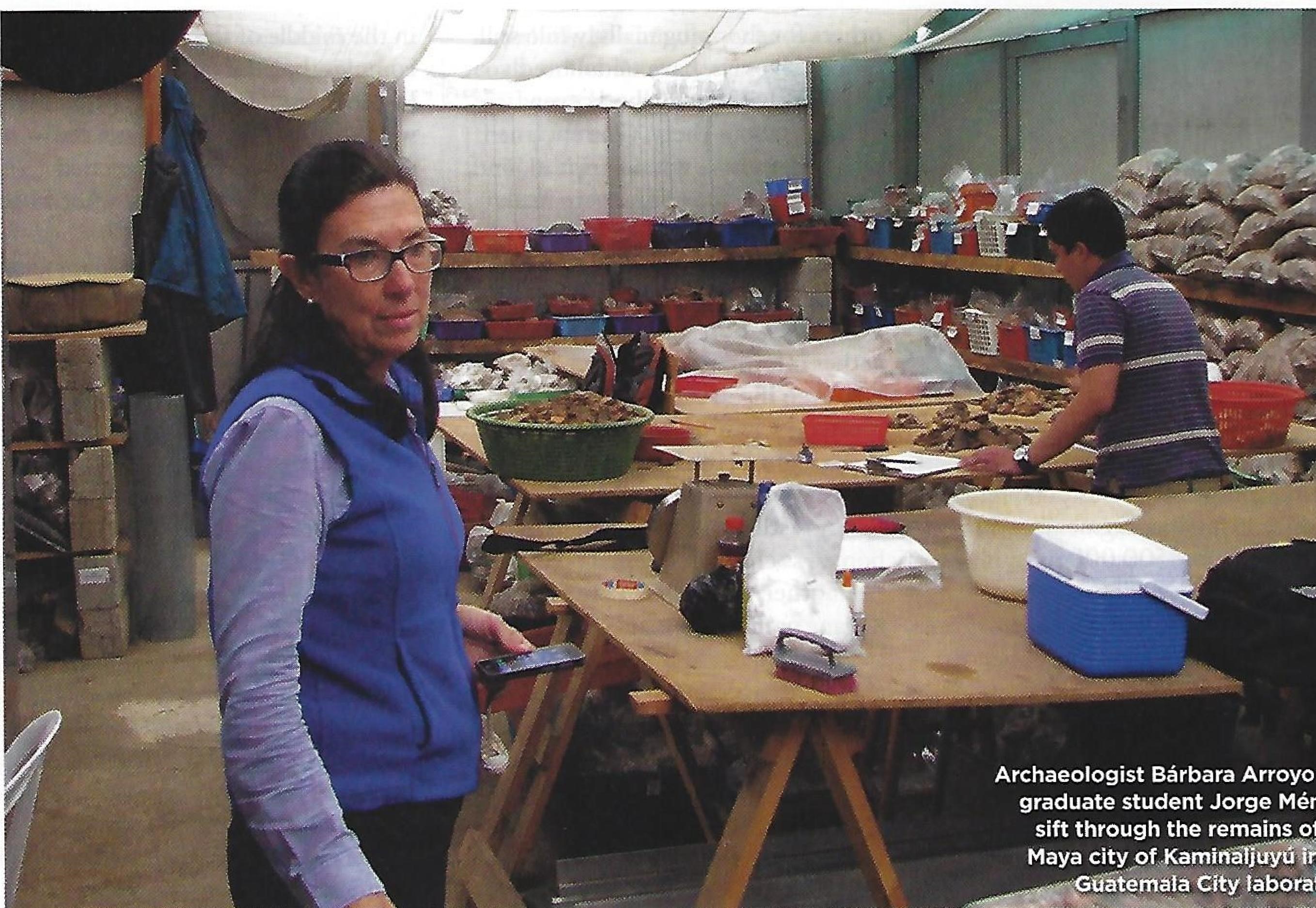
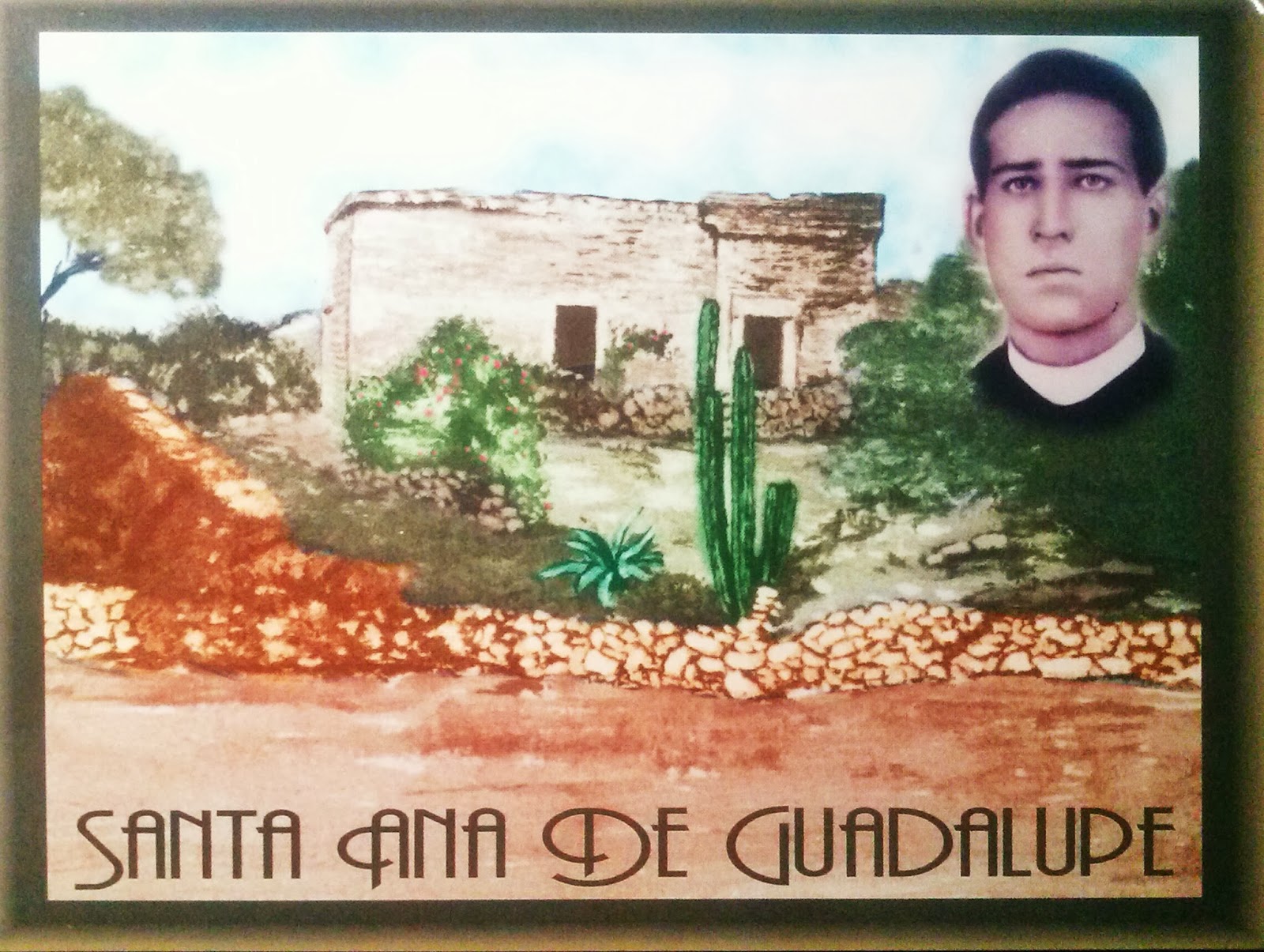
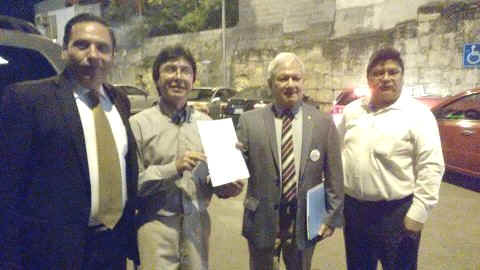

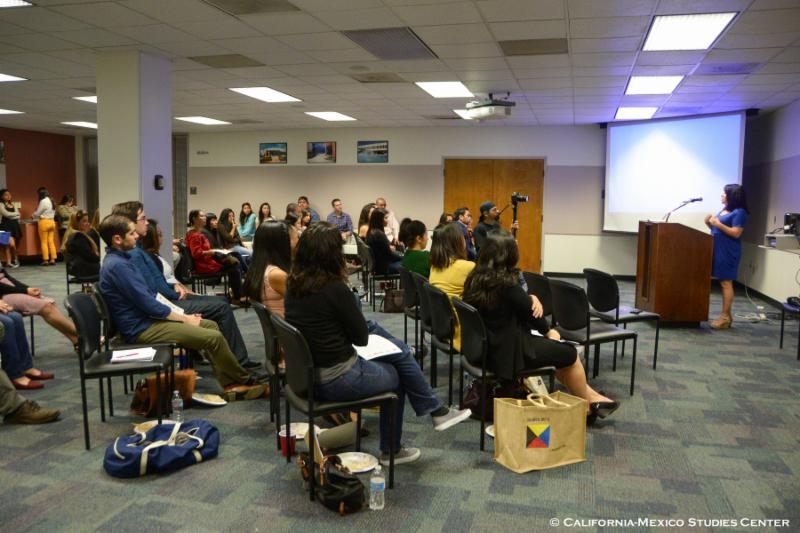
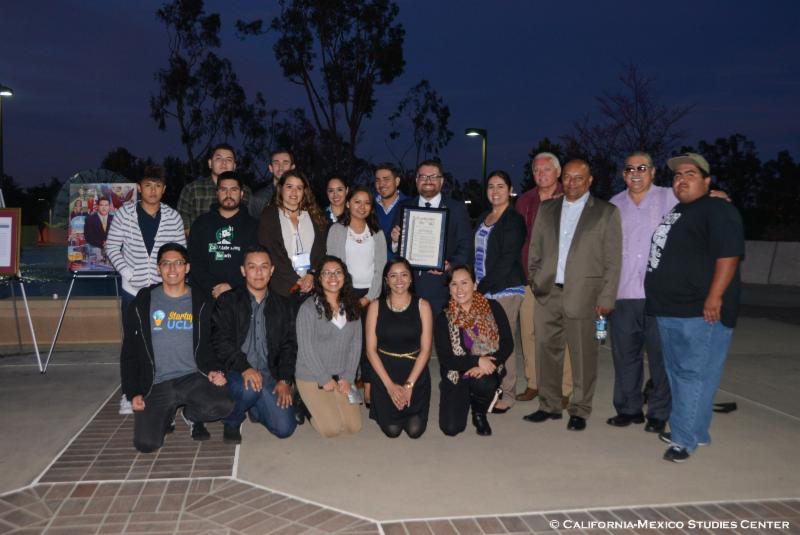
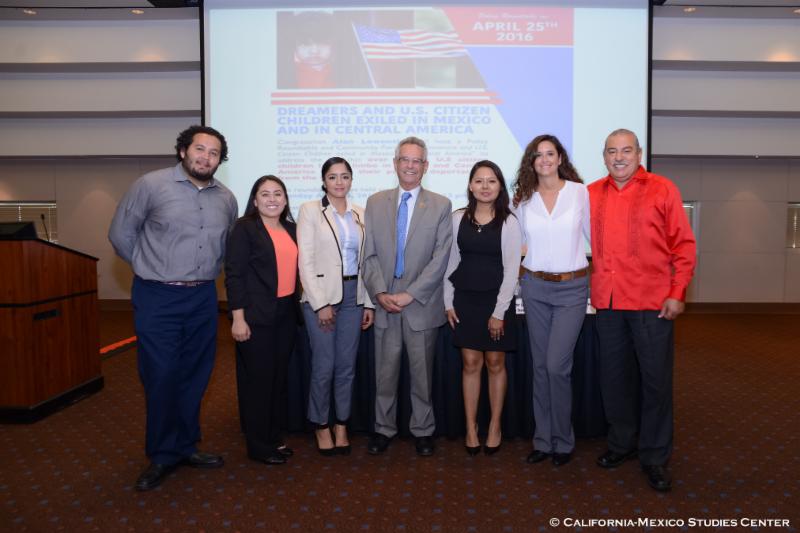

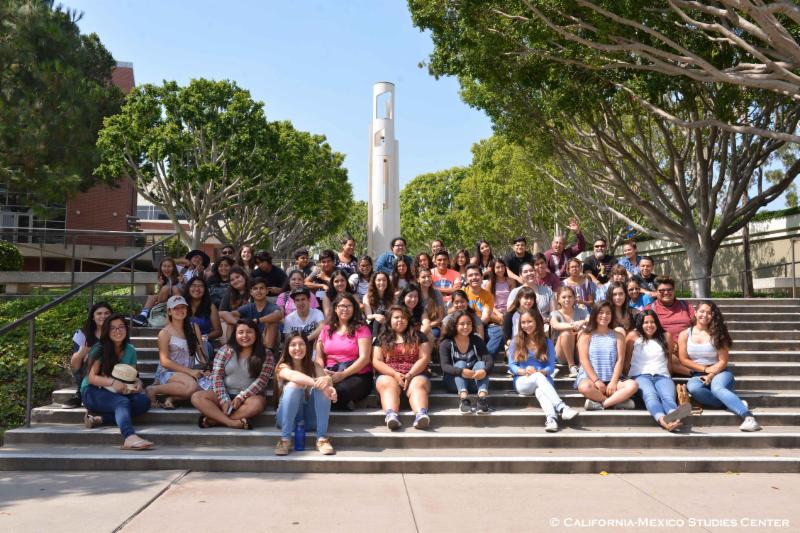
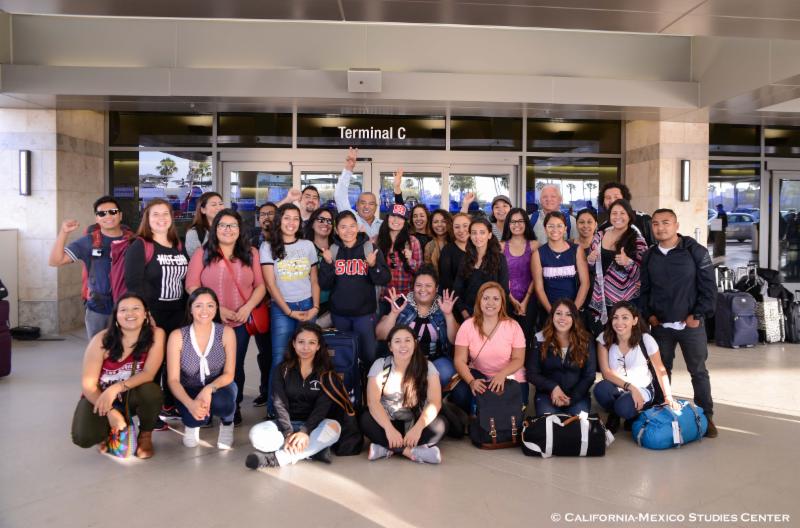
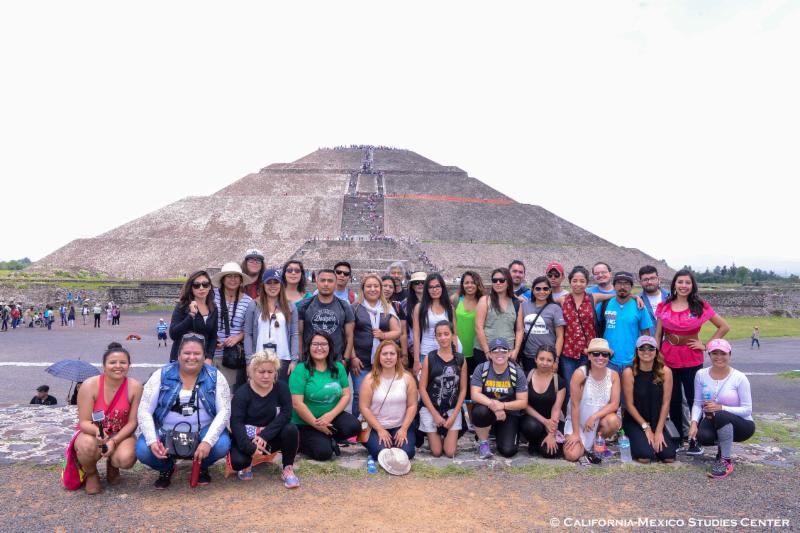
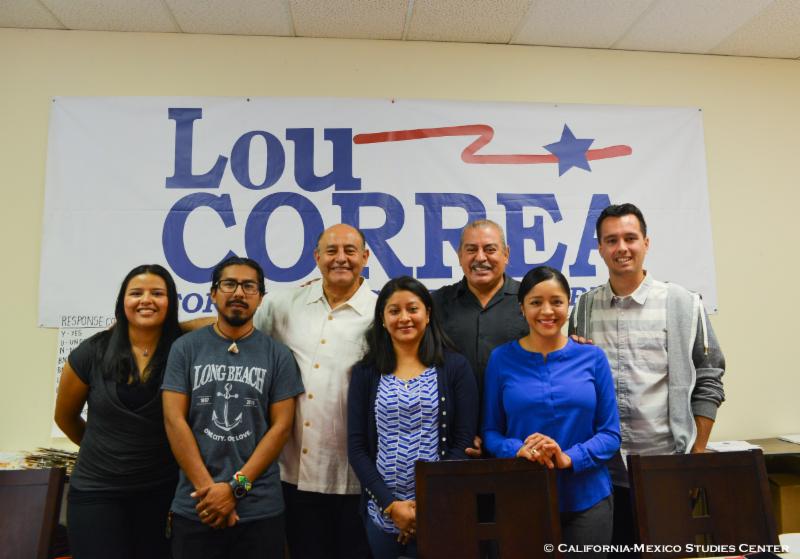
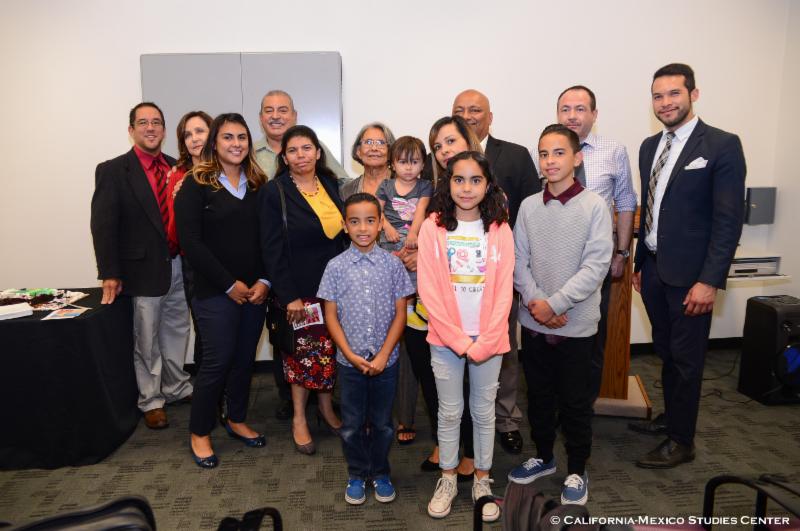

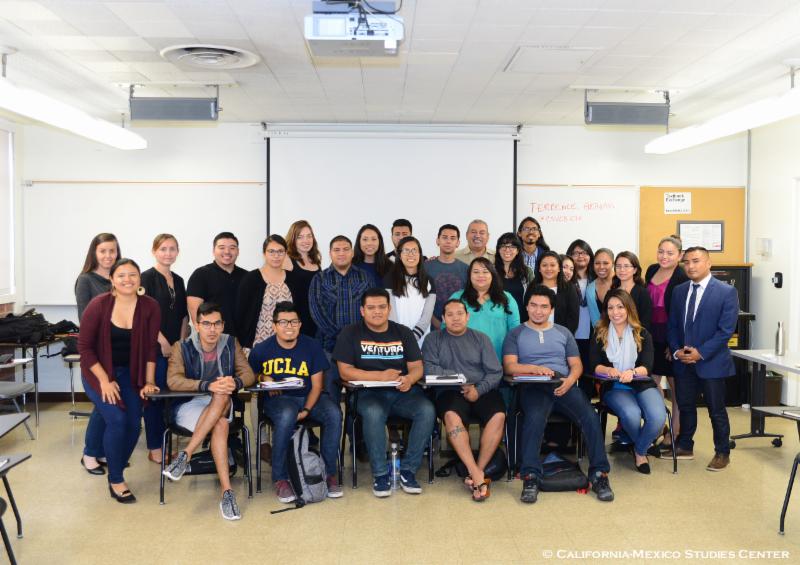
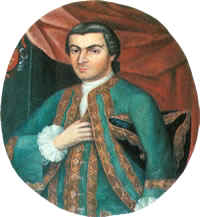
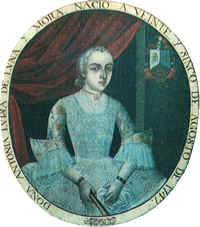
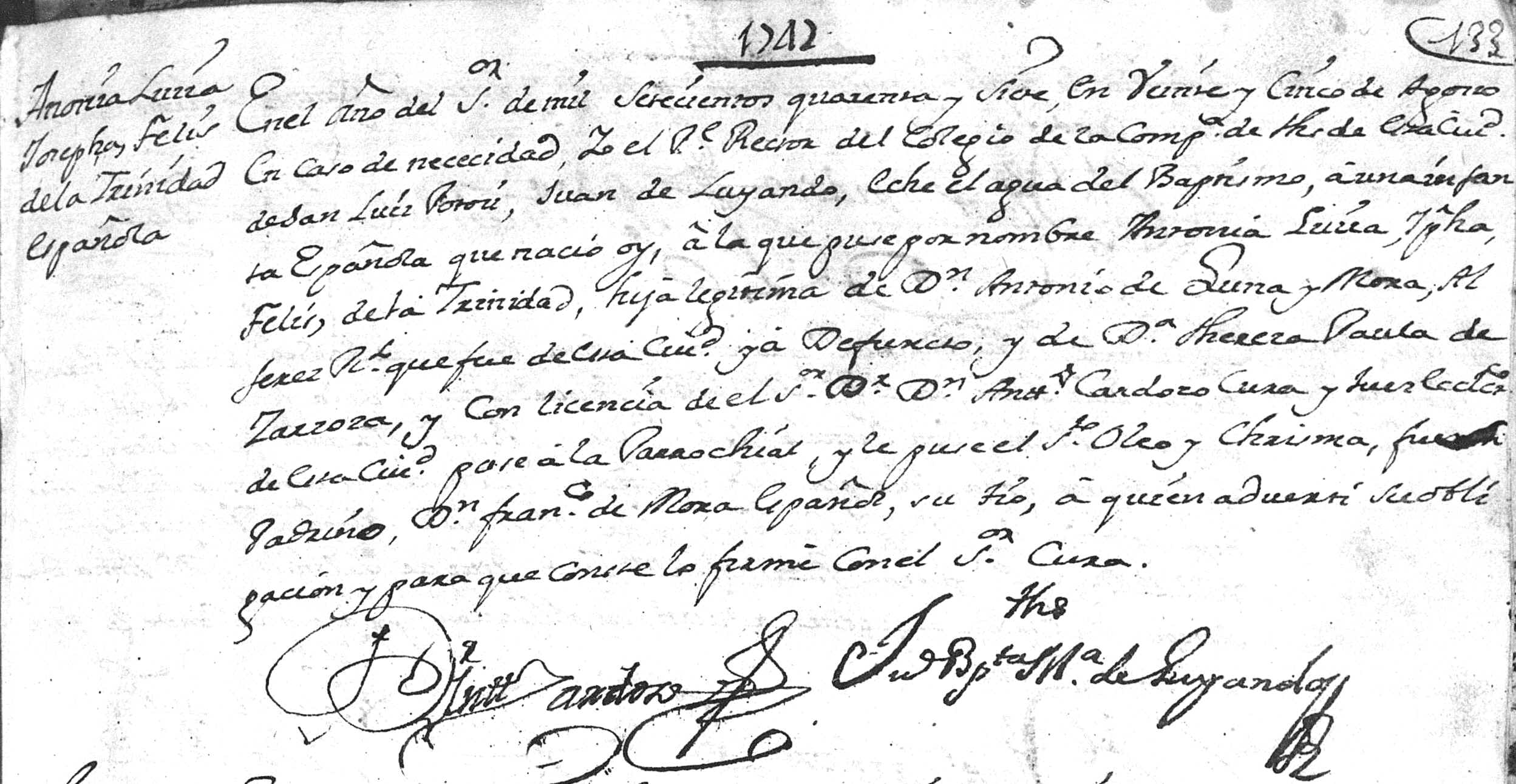
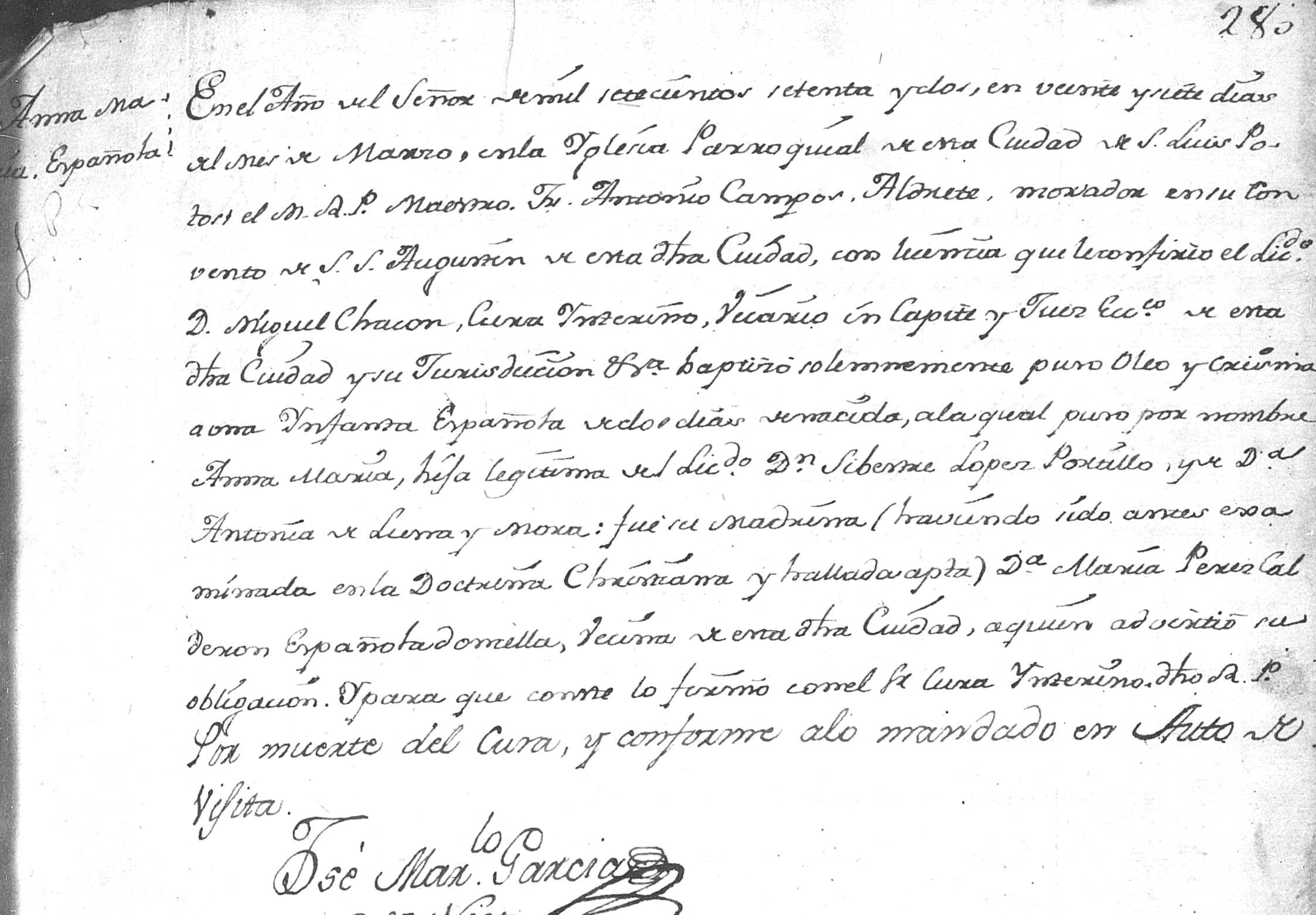
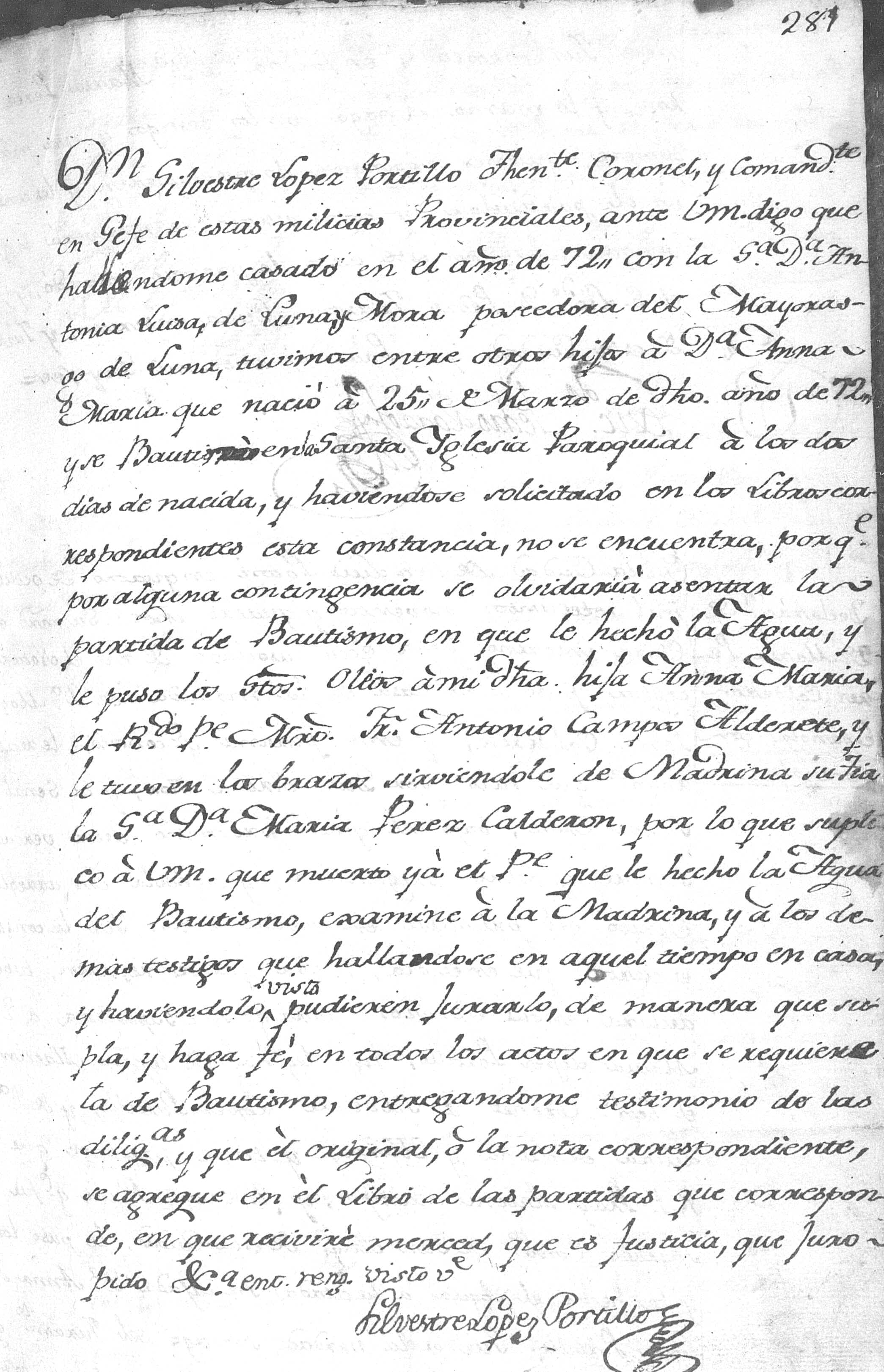
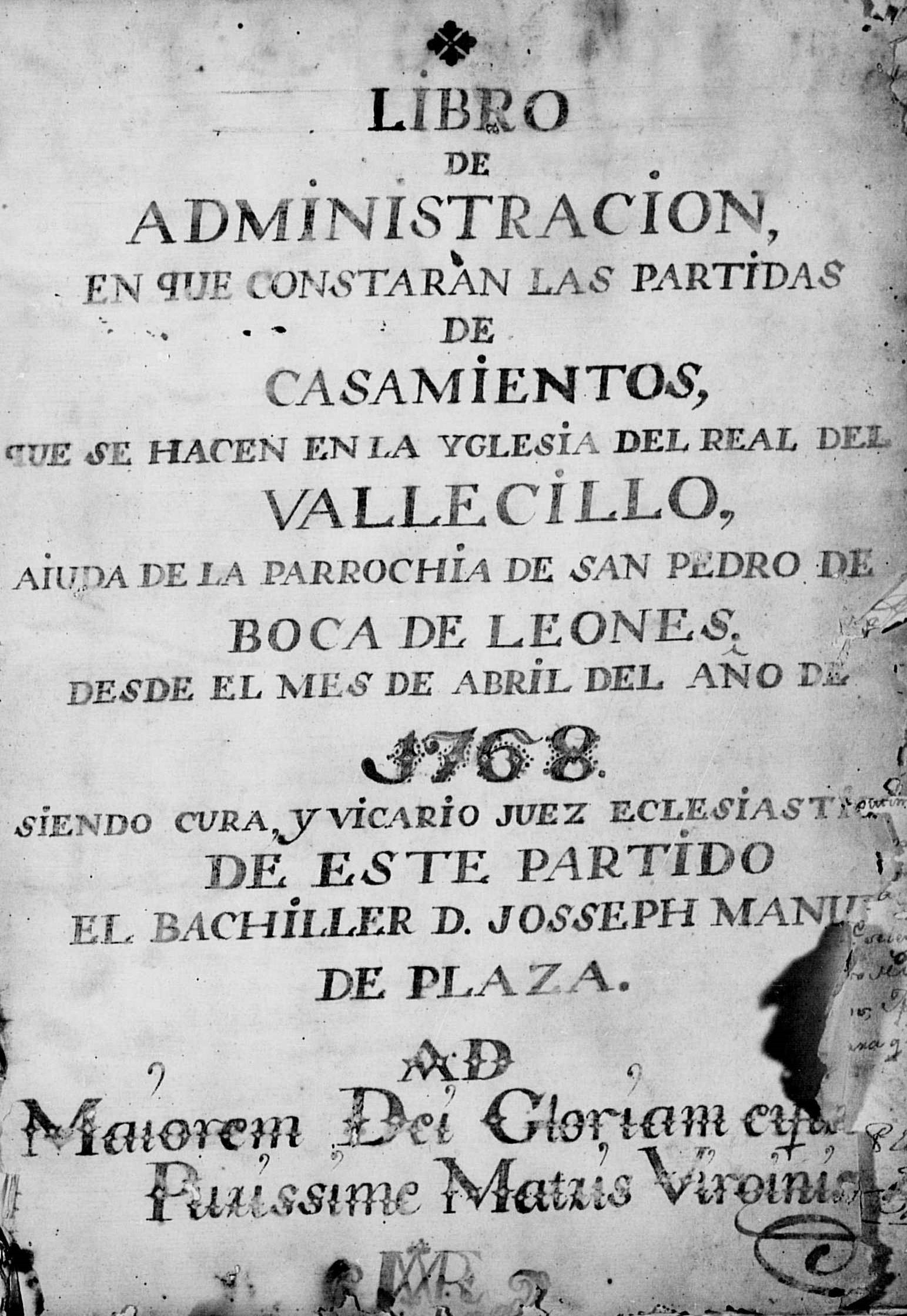
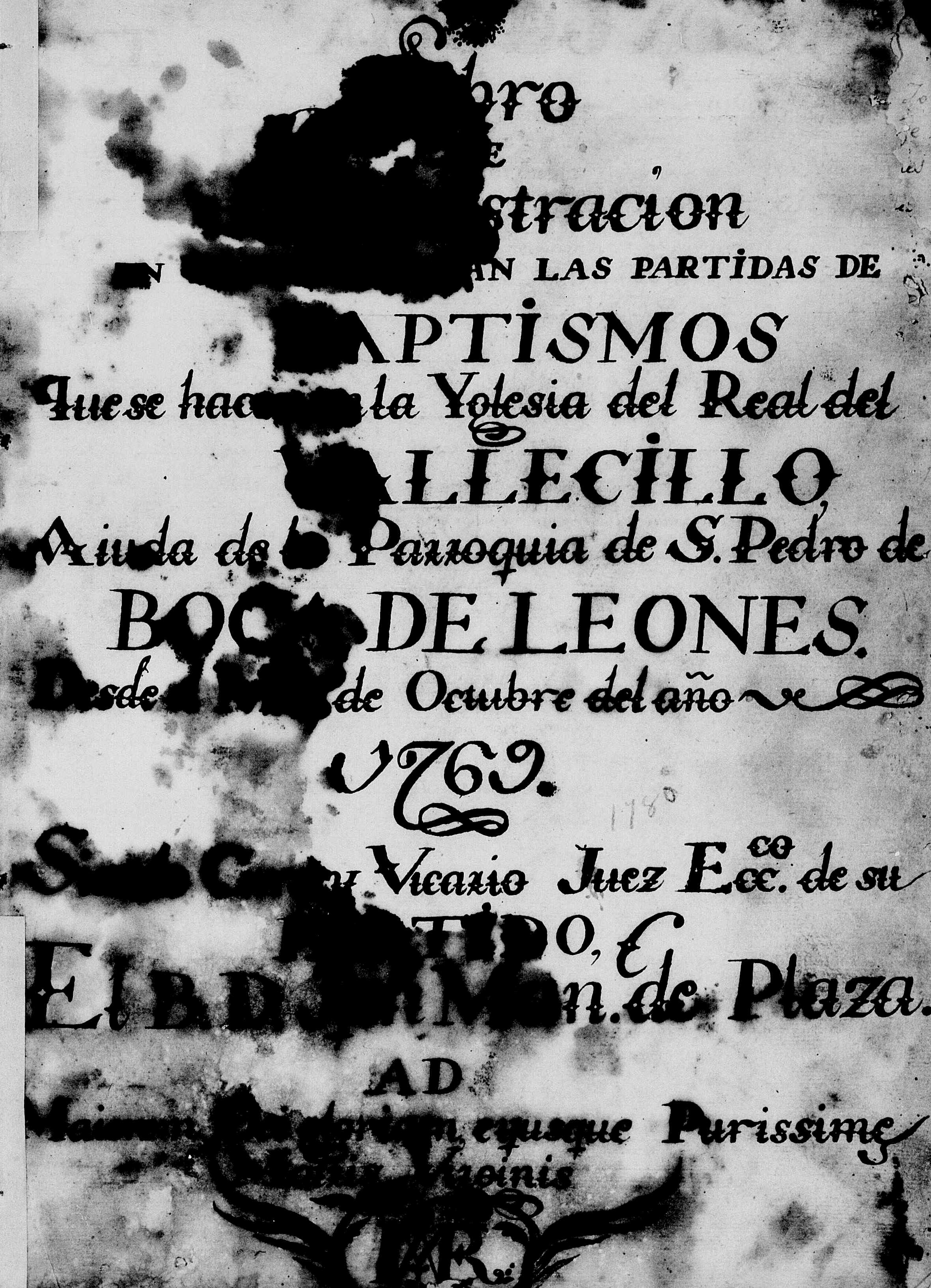
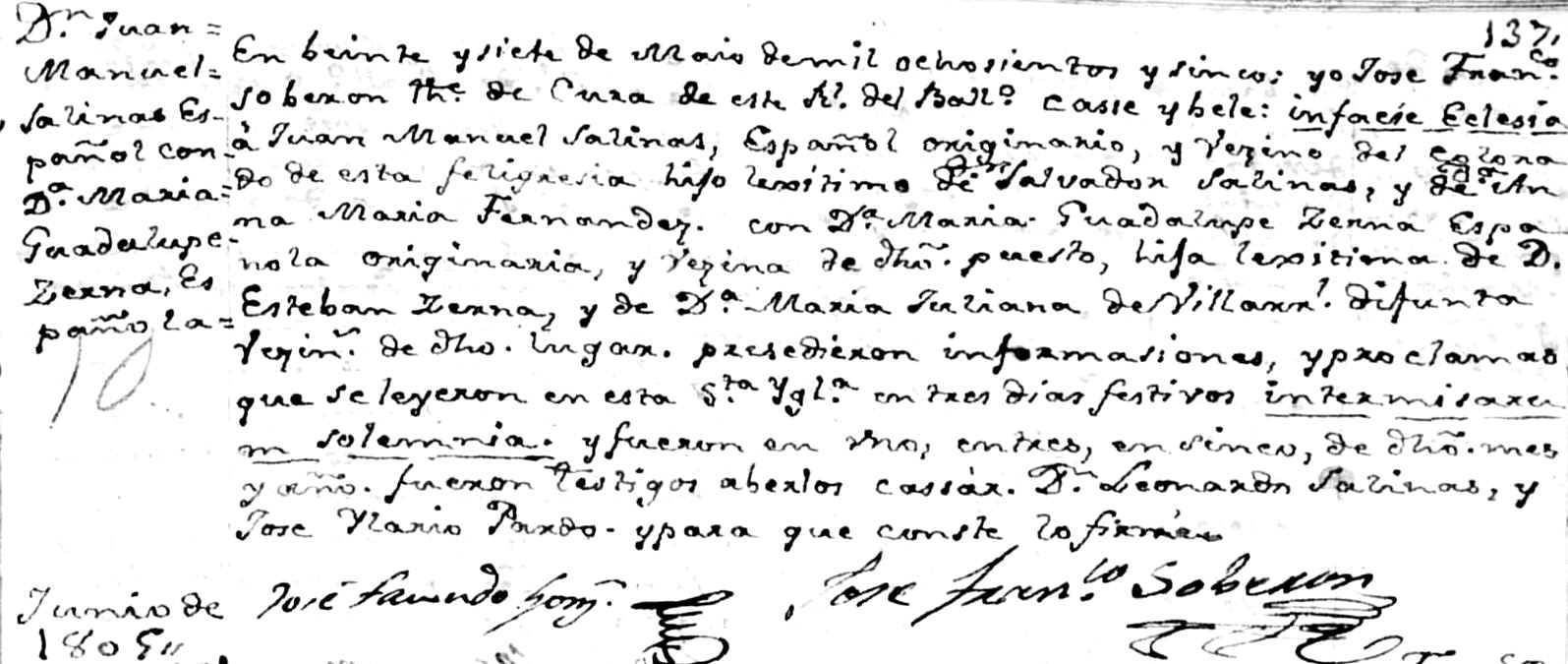
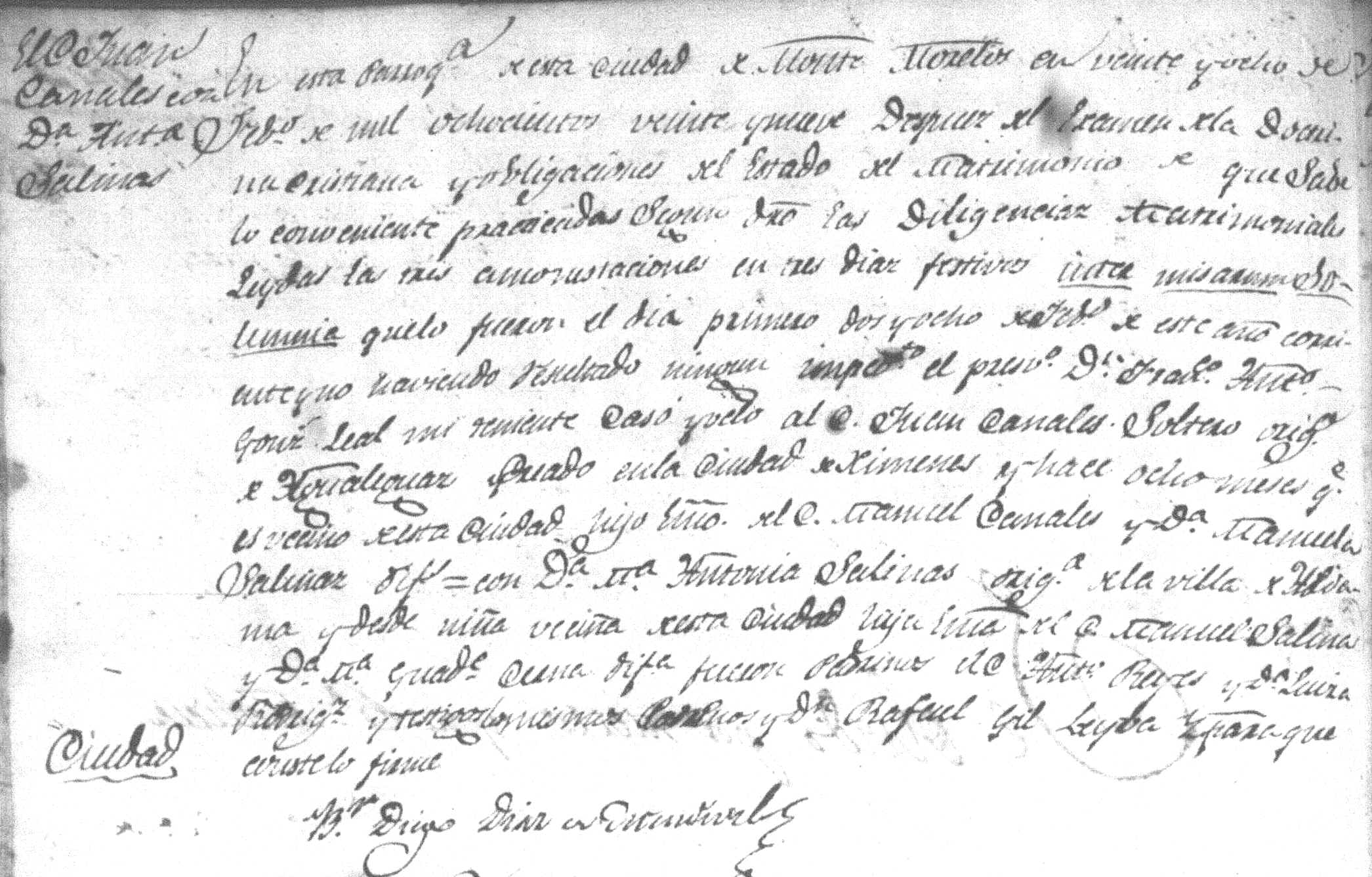
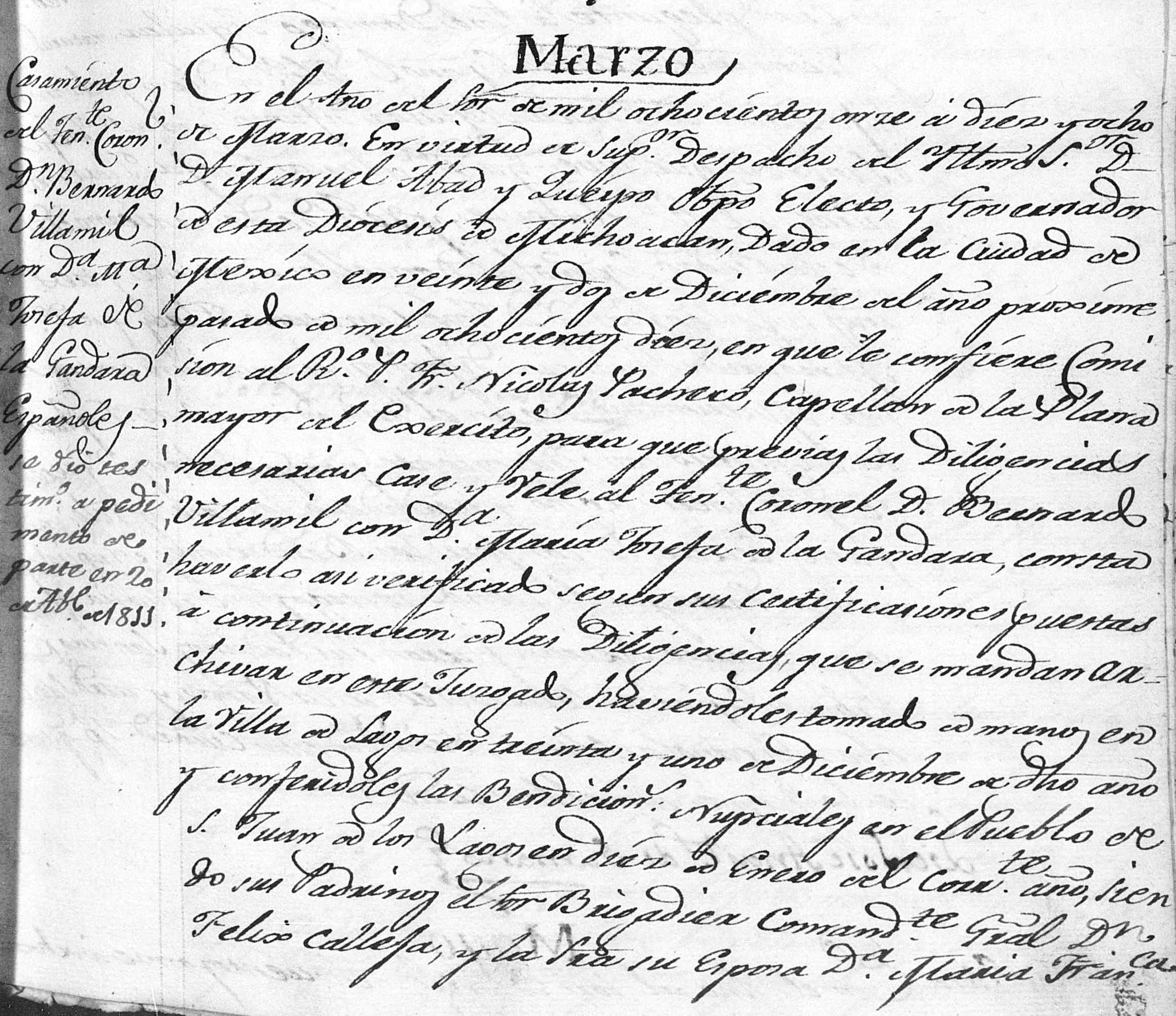

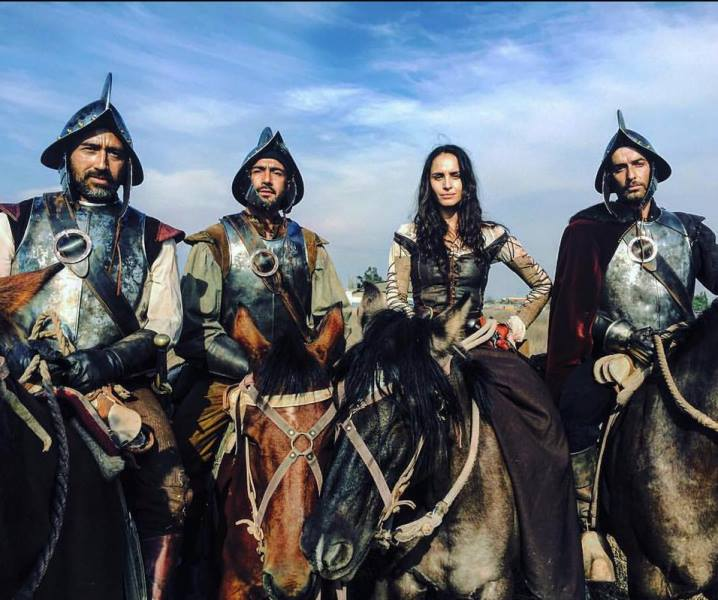

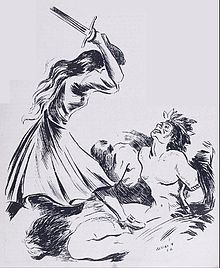 Inés Suárez después de haber decapitado a Quilicanta y otros siete curacas cuyas cabezas coloco en las
picas. Durante el ataque, la labor de Inés había consistido en atender a heridos y desfallecidos, curando sus heridas y aliviando su desesperanza con palabras de ánimo, además de llevar agua y víveres a los combatientes y ayudando incluso a montar a caballo a un jinete cuyas serias lesiones le impedían hacerlo solo. Pero aún tendría que desempeñar un papel decisivo en la lucha: viendo en la muerte de los siete caciques la única esperanza de salvación para los españoles, Inés propuso decapitarlos y arrojar sus cabezas entre los indígenas para causar el pánico entre ellos.
Inés Suárez después de haber decapitado a Quilicanta y otros siete curacas cuyas cabezas coloco en las
picas. Durante el ataque, la labor de Inés había consistido en atender a heridos y desfallecidos, curando sus heridas y aliviando su desesperanza con palabras de ánimo, además de llevar agua y víveres a los combatientes y ayudando incluso a montar a caballo a un jinete cuyas serias lesiones le impedían hacerlo solo. Pero aún tendría que desempeñar un papel decisivo en la lucha: viendo en la muerte de los siete caciques la única esperanza de salvación para los españoles, Inés propuso decapitarlos y arrojar sus cabezas entre los indígenas para causar el pánico entre ellos. 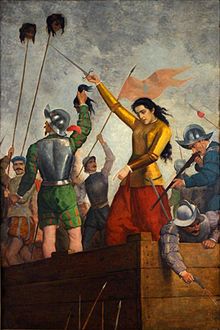 Muchos hombres daban por inevitable la derrota y se opusieron al plan, argumentando que mantener con vida a los líderes indígenas era su única baza para sobrevivir, pero Inés insistió en continuar adelante con el plan: se encaminó a la vivienda en que se hallaban los cabecillas, y que protegían Francisco Rubio y Hernando de la Torre, dándoles la orden de ejecución. Testigos del suceso narran que de la Torre, al preguntar la manera en que debían dar muerte a los prisioneros, recibió por toda respuesta de Inés "De esta manera", tomando la espada del guardia y decapitando ella misma al primero, Quilicanta, y después a todos los caciques tomados como rehenes, y que retenía en su casa, por su propia mano, arrojando luego sus cabezas entre los atacantes.
Muchos hombres daban por inevitable la derrota y se opusieron al plan, argumentando que mantener con vida a los líderes indígenas era su única baza para sobrevivir, pero Inés insistió en continuar adelante con el plan: se encaminó a la vivienda en que se hallaban los cabecillas, y que protegían Francisco Rubio y Hernando de la Torre, dándoles la orden de ejecución. Testigos del suceso narran que de la Torre, al preguntar la manera en que debían dar muerte a los prisioneros, recibió por toda respuesta de Inés "De esta manera", tomando la espada del guardia y decapitando ella misma al primero, Quilicanta, y después a todos los caciques tomados como rehenes, y que retenía en su casa, por su propia mano, arrojando luego sus cabezas entre los atacantes.